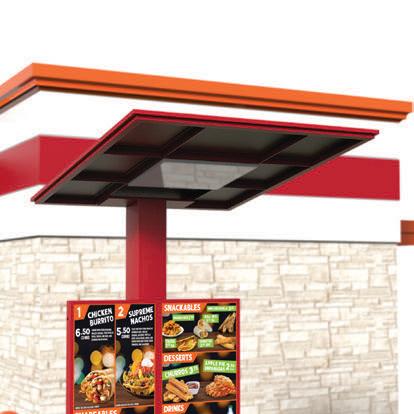




Our exceptional line of stand-up bags make it more convenient to prepare desserts and beverages with premium Ghirardelli Chocolate.

CONVENIENT Smaller bags are easy to pour and store.
ACCESSIBLE Flexible offerings let you mix and match different chocolate varieties.
VERSATILE Couverture chocolate formats are perfect for flavoring, coating, melting, and glazing. Non-couverture chips hold up well when baked.
Explore the new line and request your samples today.*




EDITORIAL
EDITORIAL DIRECTOR
Danny Klein dklein@wtwhmedia.com


MANAGING EDITOR
Nicole Duncan nduncan@wtwhmedia.com
SENIOR EDITOR
Ben Coley bcoley@wtwhmedia.com


SENIOR EDITOR Callie Evergreen cevergreen@wtwhmedia.com
CUSTOM MEDIA STUDIO
DIRECTOR OF CUSTOM CONTENT Peggy Carouthers pcarouthers@wtwhmedia.com
ASSOCIATE EDITOR, CUSTOM CONTENT





Charlie Pogacar cpogacar@wtwhmedia.com


ASSOCIATE EDITOR, CUSTOM CONTENT Kara Phelps kphelps@wtwhmedia.com

ART & PRODUCTION
ART DIRECTOR Tory Bartelt tbartelt@wtwhmedia.com

GRAPHIC DESIGNER Erica Naftolowitz enaftolowitz@wtwhmedia.com
PRODUCTION MANAGER
Mitch Avery mavery@wtwhmedia.com
SALES & BUSINESS DEVELOPMENT

GROUP PUBLISHER
Greg Sanders gsanders@wtwhmedia.com
NATIONAL SALES DIRECTOR Eugene Drezner edrezner@wtwhmedia.com 919-945-0705
NATIONAL SALES MANAGER Edward Richards erichards@wtwhmedia.com 919-945-0714
NATIONAL SALES MANAGER Amber Dobsovic adobsovic@wtwhmedia.com 919-945-0712
NATIONAL SALES MANAGER John Krueger jkrueger@wtwhmedia.com 919-945-0728
SALES SUPPORT AND DIRECTORY SALES Tracy Doubts tdoubts@wtwhmedia.com

919-945-0704

FOUNDER Webb C. Howell
ADMINISTRATION

919-945-0700 / www.qsrmagazine.com/subscribe
QSR is provided without charge upon request to individuals residing in the U.S. who meet subscription criteria as set forth by the publisher.

REPRINTS
The YGS Group 800-290-5460
FAX: 717-825-2150 qsrmagazine@theygsgroup.com www.qsrmagazine.com/reprints
Sponsored content in this magazine is provided to the represented company for a fee. Such content is written to be informational and non-promotional. Comments welcomed at sponsoredcontent@qsrmagazine.com.
WTWH MEDIA LLC
RETAIL, HOSPITALITY, AND FOOD GROUP
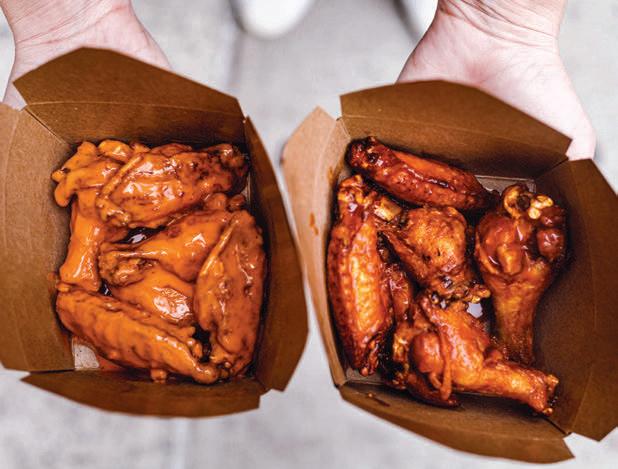

















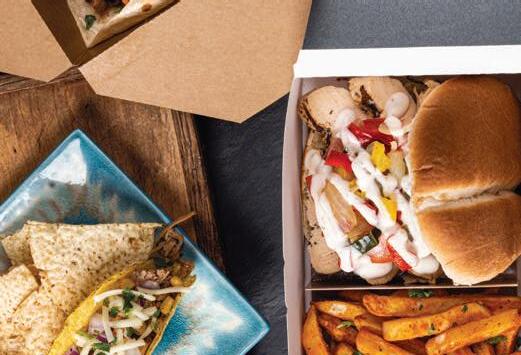


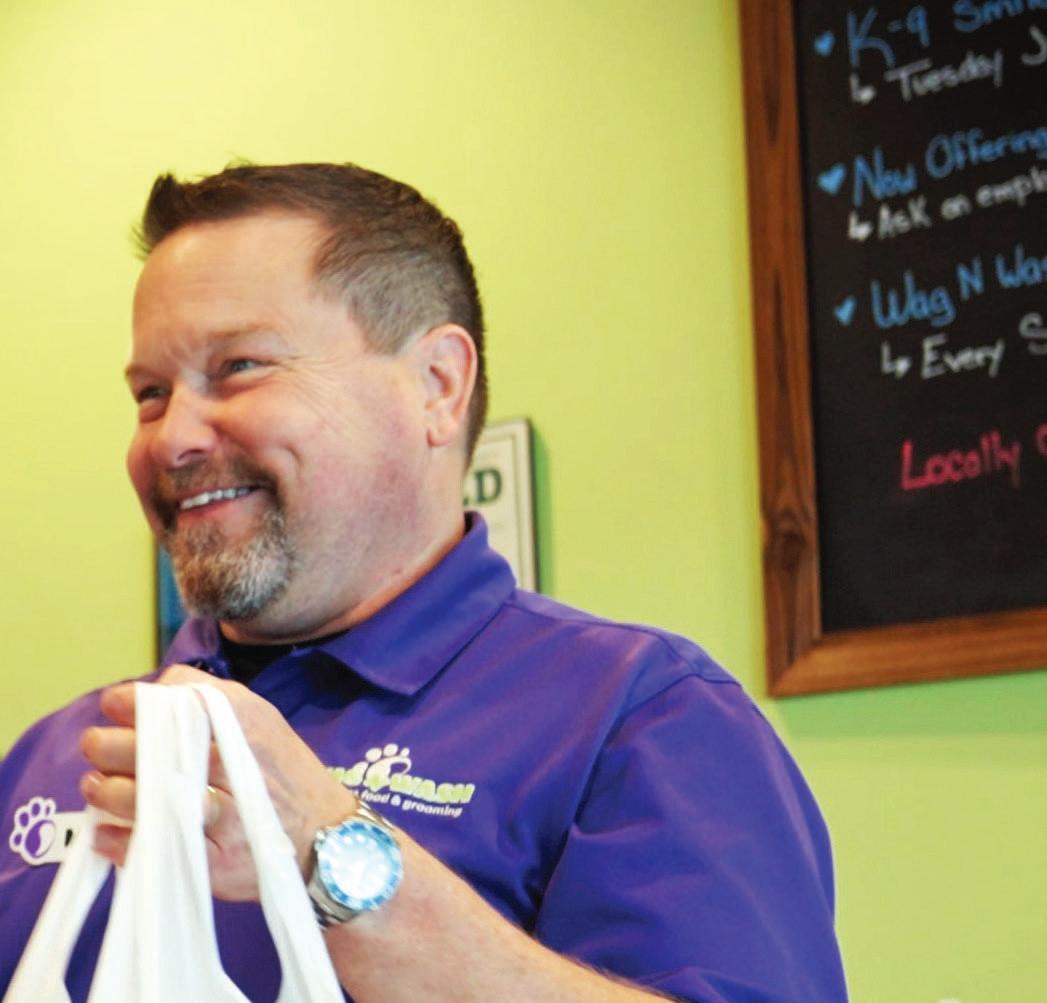
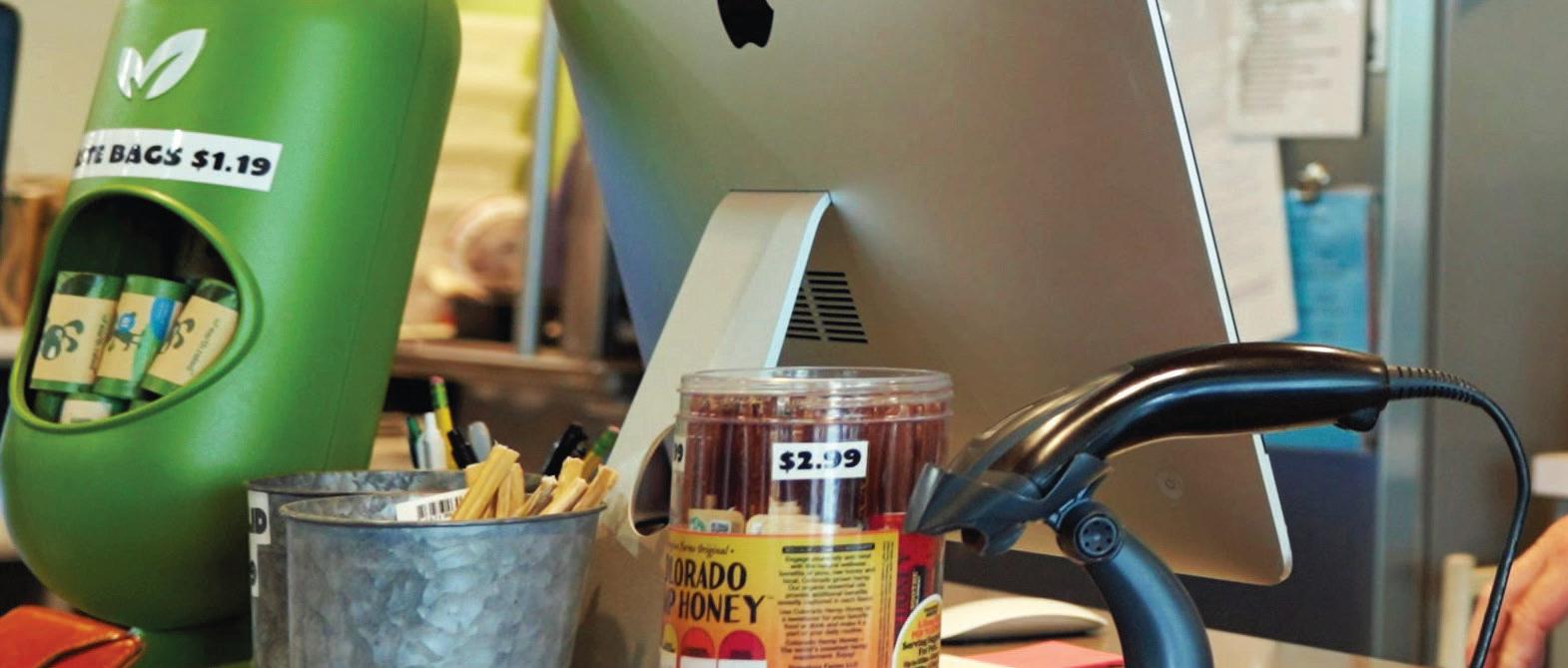

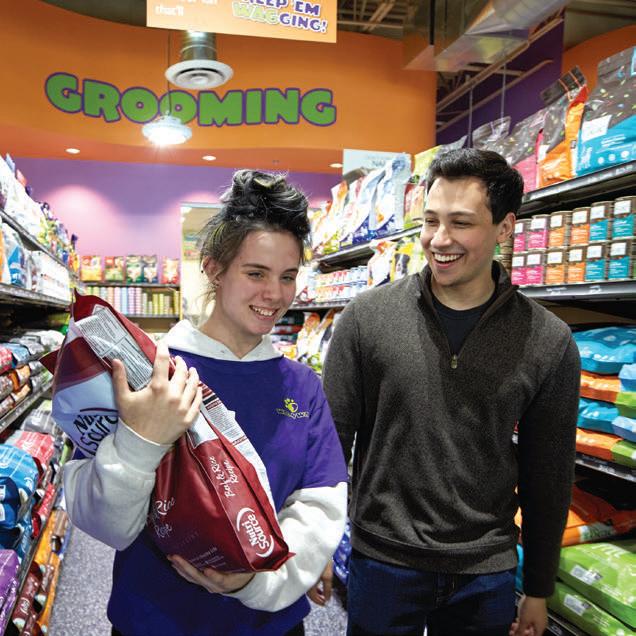


Iwant to preface by saying I’m writing this in late September. You have to put that caveat out there whenever you talk about foodservice. Monday’s problem is often Tuesday’s long-forgotten fire. One of the reasons we all embrace restaurants is because you wake up with no clue what’s ahead. But with that said, restaurant labor has stuck to the priority board since the day I made my first call at QSR Will it get better a week after I type this letter? Hard to say. Yet it won’t lose relevancy. That much I can promise. Earlier in the month, some operators told me application flow was up. One even mentioned they had the unique task of suddenly coaching GMs on how to manage labor. Through the pandemic, it’s mostly been a crash course in skeleton crew survival. And yet, as a consumer, a local fast casual recently stopped opening on the weekends and another took 45 minutes to fulfill a digital order because they were strapped.
It’s an unstable topic. But one thing I think we can agree on is COVID spun the wheel. Brands are now more attentive to workers’ needs and to higher pay, and the reality they’re facing as much competition to lose employees from other sectors as they are from each other.
In platform Toast’s recent Voice of the Restaurant Industry report, 32 percent of operators said they had a difficult time hiring in 2022. Six percent cited “extreme challenges;” 26 percent moderate; 36 percent slight; 23 percent few; and 8 percent none.
Among the top tech hurdles at hand, inventory and scheduling employees saw the biggest year-over-year increases—22 percent picked managing inventory and cost of goods; 19 percent scheduling
employee shifts and time; 19 percent managing online ordering; 18 percent integrations with third-party platforms causing workflow issues; 17 percent managing and leveraging guest data; and 17 percent managing multiple order sources.









It’s an intriguing combo. Operators surveyed noted they have an average of seven service models today. Some, as many as double-digits (counter, hybrid, table, takeout, delivery, catering, retail, wholesale, food hall, and drive-thru).
Not surprisingly then, the No. 1 area of focus for restaurants in the next 12 months was employee training, at 45 percent.
Simply, restaurants are trying to deliver experience through a bevy of channels. Meanwhile, they’re flipping staff over at higher rates ( as much as 200 percent at some brands) So technology arrives on two fronts: One, to automate duties so employees can work on consumer-facing tasks; and two, to bring employees up to speed faster. And that latter point is why simplified operations are a buzzing topic, too.
Where we’ve arrived, it appears, is a world where restaurants are trying to catch their breath from a breathless run of innovation, and to take these evolutions into an environment where they improve human interaction rather than replace it. Software to boost employee productivity and make the quick-service restaurant a more desirable place to work. Can it all come together? That’s what 2023 is going to show us.
Hiring and retaining workers remains at the forefront of running a successful restaurant. But the tools are changing.

percent—want to see more seafood on quick-service restaurant menus. Additionally, only 42 percent of consumers are satisfied with seafood offerings in the quick-service space, leaving many opportunities for restaurants to create innovative LTOs featuring seafood. This is particularly true among diners who want to reduce their red meat consumption, as the survey found 61 percent of consumers believe fish or seafood is healthier than plant-based meat alternatives.
Leah Krafft, foodservice marketing manager at ASMI doesn’t find these results surprising. “Diners know how healthy seafood is and believe it to be much healthier than plant-based meat alternatives,” she says. “I think there is just so much noise about plantbased dishes, but, in reality, the desire is for seafood on the menu. It’s the number one protein diners want when avoiding meat or reducing meat consumption.”
The restaurant industry is already highly competitive, but amid high inflation, rising interest rates, and staffing and supply chain shortages, it’s no surprise operators are feeling the pressure. Additionally, as margins shrink, it’s become increasingly important to not only draw in and retain more customers, but also to increase check sizes to bring in revenue.
It’s no secret that striking the right balance of menu offerings is crucial to drawing in customers, and its menu offerings is one of the major operational elements entirely under the control of the restaurant brand. Yet a recent online survey conducted by Datassential on behalf of the Alaska Seafood Marketing Institute (asmi) highlights a major menu opportunity for quick-service brands.
Notably, the survey found 59 percent of customers want to increase their seafood consumption. Meanwhile, the majority of customers—54
Yet the type of fish available on a restaurant menu is also important to consumers. Datassential reports consumer preference for Alaska seafood has grown since 2019, and items labeled “Alaska seafood” are now preferred two-to-one over seafood that is not labeled as “Alaska.” In fact, the study found 91 percent of diners were more likely to order seafood when “Alaska” is called out on the menu, meaning marketing the origin of seafood could be a significant boon to restaurants.

”Consumers see Alaska seafood as fresh, wild, and tasty, as well as offering strong health benefits,” Krafft says. “And consumers prefer the term ‘wild’ over ‘farm-raised’. ‘Wild’ boosts interest likely since it’s seen as more climate-friendly. Emphasizing how Alaska seafood is wild-caught helps establish Alaska’s connection to these key criteria in consumers’ minds.”
With these lessons in mind, adopting Alaska seafood can help quickservice restaurants generate positive consumer sentiment, as well as drive sales. Additionally, with a wide variety of fish hailing from Alaska, operators have nearly endless menu options.
“With inflation and increased costs to today’s operator and diner, menuing seafood is still an important answer to consumer demand for eating healthy, delicious foods,” Krafft says. “There are affordable ways to menu seafood without sacrificing on innovation. It’s clear that menuing and calling out ‘Wild-caught Alaska’ is of the utmost benefit to operators.” ◗
restaurants.
/BY
Want the best fish tacos? Go to the source. Alaska Seafood is always authentic - wild flavor from a wild place.
AlaskaSeafood.org










IN SEPTEMBER, MOE’S SOUTHWEST GRILL unveiled “Queso Incognito,” a portable speaker-shaped container that keeps the brand’s “liquid gold” undetectable— so customers don’t have to share, the brand explained. Guests could now sneak queso into restaurants, movie theaters, or even family dinners. Moe Rewards members were able to enter to win one of three limited-edition devices along with a “Liquid Gold Queso Card” that unlocked a flood of queso for the remainder of 2022 (more than three kegs of beer worth).
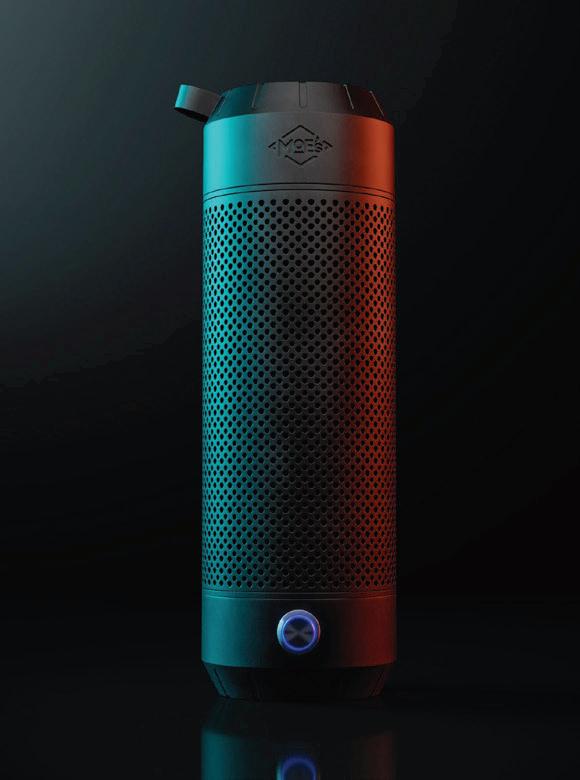




“Our three-cheese queso—fondly referred to as ‘liquid gold’ by our fans—is a Moe’s staple, and we think something this iconic deserves to be celebrated,” says Tory Bartlett, chief brand officer. “This year, we’ve gone bigger than ever before to give our most loyal queso enthusiasts a chance to enjoy their favorite treat, wherever and whenever. We’re excited to kick off the queso festivities and to give our customers more of what they’re craving.”


 Moe’s “Queso Incognito” container appears as a speaker from the outside.
Moe’s “Queso Incognito” container appears as a speaker from the outside.
Moe’s gave cheese lovers a new way to enjoy the fan-favorite add-on, anytime, anywhere.
And when you tackle one crisis, another is waiting. In the fall, a survey from Alignable.com found 9 percent of operators were laying o workers and another 55 percent suspending recruitment e orts altogether in light of rising costs and broader economic challenges. But still, the high-turnover reality of running a restaurant keeps this topic central to every playbook in every segment this industry has to o er.
So let’s ask the experts.
What are you accepting that you thought you’d never allow? “The no-call no-show. Used to be two no-shows and you were out, but those days are gone And the second thing is not holding people to the brand’s standards for uniforms. Now we’re letting people wear jeans with a Cousins branded shirt or hat. It’s more everyday wear that they choose rather than a strict uniform.”
How are you recruiting? “We’re using everything: Digital billboards in markets where we need immediate hires, social media, and—as far as job boards go—Indeed is still one of our best sources. And, we put stickers on every sub: “Work for Cousins Subs!”
Where are we failing and how do we fi x it? “In the restaurant industry, we’re just stealing from each other, and our industry is going to have to adapt to how the workforce has shifted since the pandemic. We have to figure out how we can take advantage of the gig economy and those part-time workers who want to work multiple places. The franchise groups that own multiple brands may have a huge opportunity parsing out employees across all of their brands.”
Jennifer














CEO, Wetzel’s Pretzels


Is there a way to ease the pain of employee turnovers? “Keep your business model simple. For most store-level staff, this is a starter job; they’re young students working part-time so keep the menu streamlined and training easy. Turnover becomes more painful as complexity increases. For instance, don’t bring out a new item in the holiday season. LTOs and new items add complexity to the supply chain and to training. We decided to postpone introducing a new item until February timeframe because our stores will have 4Q traffic even without adding new items, and franchisees will be better equipped to manage the holiday traffic if we keep it simple.”
Why do your employees quit? “We asked 3,700 restaurant employees why they quit and the top three answers were wages, schedule flexibility, and school— in that order.”





How do you get employees to show up and stay put?
“When employees choose their own schedules, they’re more likely to show up for the shift. No-shows happen for many reasons including scheduling conflicts, a desire to avoid working with specific people, and illness—but self-scheduling allows employees to trade shifts to prevent these types of no-shows. Flexible self-scheduling can also be a powerful recruiting and retention tool.”



What’s the best way to ramp up for 4Q / holiday labor demands?
“Refine your hiring strategy to be enticing and resonate with workers. You should incentivize your existing staff for referrals and get creative around how you market your brand— think videos of your team, pitching the vision and giving folks a glimpse into what it’s like working there.”


co-founder , Beyond Juicery + Eatery
How can corporate make sure franchisees get staffing right? “When a potential investor comes in and wants to franchise, my question is: ‘Who’s your operator?’ You need someone with skin in the game who is dedicated and loves what they do.”




What’s your best advice for hiring? “Act fast. If you don’t hire them when they’re in front of you, they’re gone. If you call them two days later, they’ve already taken another job. That goes for managers too; you need to move fast to check references, do background checks, and extend an offer. And if you put off orientation until next week, they may have taken a better option.”
The labor challenge for restaurants today has more layers than a wedding cake.Jason Westhoff president, Cousins Subs Jordan Boesch CEO, 7shifts

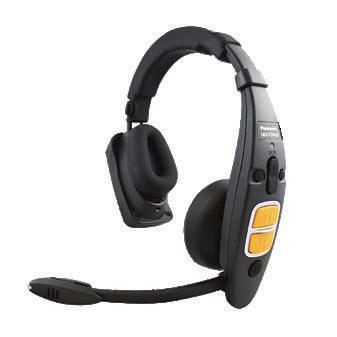
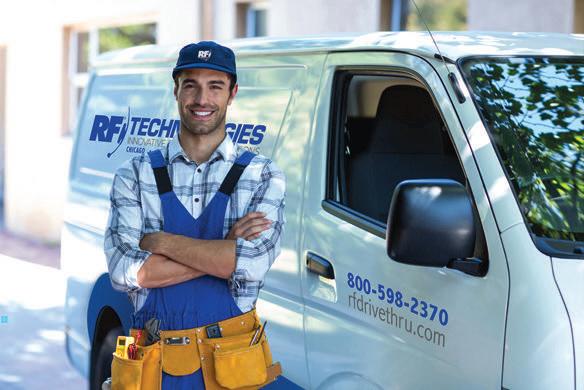


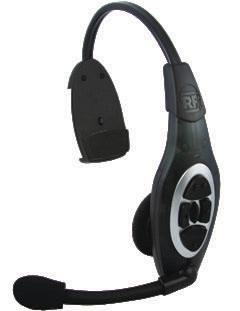





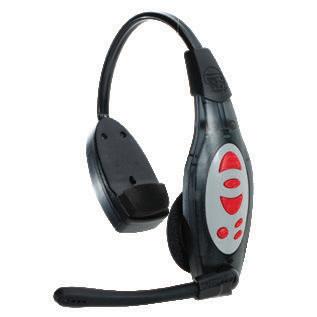


 / BY
/ BY











The demand for plant-based foods has risen astronomically. It is a trend being driven by the growing number of consumers adhering to a flexitarian-style diet, as well as those with food sensitivities and intolerances.
For some, the words “plant based” might evoke images of one-forone swaps, but Richard Hoelzel, corporate executive chef at Idahoan® Foodservice, sees something else coming into focus.



“Consumers are discovering that there’s more to making plantbased alternatives better for you,” Hoelzel says. “Rather, clean-label products are something people are really starting to prioritize, along with plant-based alternatives.”
To meet the demand for clean-label, plant-based foods, chefs are turning toward potatoes. Potatoes are a nutritious vegetable that can be used in a variety of dishes, dayparts, and cuisines. They can be served mashed or shredded in traditional sides, or used as a comforting, healthy base in creative bowls or salads.

“The potato is a vehicle,” Hoelzel says. “That’s how I look at it. When you talk about innovation, there are so many options when you are working with potatoes.”
The downside of raw potatoes, however, is their relatively short shelf-life and the high labor costs associated with preparation. That’s why chefs love Idahoan’s Honest Earth® line of clean label products, which are created using a proprietary cooking method to produce Fresh-Dried™ potatoes. The cooking method “honors the integrity of the potato,” Hoelzel says, while adding a host of operational advantages. Included in those advantages is the fact that the products carry a 12-month shelf life and therefore reduce food waste.
Unlike potatoes that have undergone traditional dehydrated methodologies, Idahoan’s Fresh-Dried™ potatoes remain structurally sound. That’s why Honest Earth products are considered speed-scratch



ingredients—they perform and taste the way a potato should. Best of all, chefs get the credit for this while cutting back on labor otherwise spent prepping potatoes.

Hoelzel uses the Honest Earth Creamy Mashed Potatoes or the Honest Earth Rustic Mashed Potatoes in globally inspired bowls, like a Mashed Potato and Tofu Curry Bowl, or a Sweet Chili Pork Bowl with Creamy Mashed Potatoes. Honest Earth Hash Brown Shredded Potatoes open up a world of possibilities on every single menu—they can be made into Hash Brown Latkes or served as the base of a Cajun Crawfish Creole Bowl, for example.
Each Honest Earth product contains simple, familiar ingredients. The Honest Earth Creamy Mashed Potatoes and Honest Earth Rustic Mashed Potatoes contain Fresh-Dried™ potatoes, and a hint of sea salt and butter for flavor and texture. Honest Earth Shredded Potatoes contain Fresh-Dried™ potatoes, sea salt, and cracked black pepper. Chefs only need to add water, or some other liquid—Hoelzel even recommends coconut milk, or stock—to refresh the potatoes and enable a world of plant-based innovation.
“Nobody out there is doing potatoes the way we do them,” Hoelzel says. “These are clean-label potatoes that perform exactly the same as if you made them in-house. It’s truly a scratch-quality, foodservicefriendly, plant-based ingredient.” ◗

“Nobody out there is doing potatoes the way we do them.”
The versatile vegetable is opening up a world of flexitarian-friendly innovation.
CHARLIE POGACAR





























































“My favorite part is the bone”

According to Datassential, 29 percent of the American population limits meat consumption in some manner. Furthermore, 28 percent say they prefer plant-based over animal proteins. What does this add up to? A sizable opportunity for restaurants. Americans’ reasons for avoiding meat products vary. Some are taking a stance against the killing of animals and their byproducts; others are switching because rearing animals for meat takes a toll on the environment; others simply want to be healthier.
Steele Smiley falls into all of those categories, but especially the latter. He launched his fast casual, Stalk & Spade, last year and has three locations with 10 projected by the first quarter of 2023.
Stalk & Spade offers 100 percent plant-based food including burgers, chick’n sandwiches, and salads. It’s important to Smiley the meals taste like the meat dishes they mimic. “We won’t put some-

thing on the menu unless it tastes like the classic original,” he says.
But Smiley doesn’t work with external companies—all R&D is done in-house and the food is proprietary. “We’re the only fastfood chain that owns its own supply chain,” he says.
Matt de Gruyter launched Next Level Burger in 2014 with the goal of improving consumers’ health and being climate friendly.
There are now nine locations and de Gruyter, CEO and founder, opened a Denver flagship in August.
It’ll come as no surprise the nascent chain offers burgers and fries, but also brats, salads, chik’n burgers and meals, and shakes. Next Level’s signature patty is an organic quinoa and mushroom offering that’s made in-house. It also menus Beyond Meat burgers. Working with other companies just makes sense for them, de Gruyter says. “There are companies spend-







The beverage menu has long been a prime area to increase margins and ticket sizes.


Drinks can also be a great differentiator for brands looking to win brand loyalty at a time when that is increasingly pivotal—if diners are eating out less due to worsening economic conditions, then it is all the more critical to find ways to lure them out. And, just as food that is challenging to make at home will always be popular at restaurants, beverages that cannot easily be found on the shelf at the grocery store can lead to increased foot traffic.
So what type of drinks are consumers looking for? While soda consumption at restaurants has been declining for years, a renewed focus on innovative, functional beverages has taken center stage—for instance, energy drinks. According to Chicagobased Mintel, “the energy drink category is a strong performer within the wider non-alcoholic beverage industry, outpacing growth in other beverages.”

“Consumers, especially those aged 18 through 34, are always wanting to try new items,” says Emily Hirsch, vice president of beverages at Botrista Beverages. “The increasing demand for energy drinks is a good example of what those types of consumers are looking for.”

However, expanding the beverage menu to new categories is challenging for restaurant operators as they continue to face labor shortages. A recent report from the National Restaurant Association stated that nearly 80 percent of operators do not have enough employees to match demand. That can weigh heavily on a beverage program—when not executed well or consistently, drinks su er greatly.









“Developing great drinks to delight their customers—and drive revenue—is desirable, but not easy to execute,” says Jason Valentine, chief strategy o cer at Botrista Beverages. “Industry labor participation is not back up to pre-pandemic levels, so staing takes priority over investing in beverage innovation.”















Perhaps this is why, according to a recent Datassential survey, 63 percent of operators plan to keep their beverage menus the same, while only 8 percent saw the non-alcoholic beverage space as a place where they could innovate. This makes non-alcoholic beverages a clear place where brands could create di erentiation—if and when they have the solutions to do so.



In many ways, the solutions created by Botrista Beverages are primed to help operators meet the moment. CEO and co-founder Sean Hsu started Botrista Beverages with the goal of creating an automated way for operators to add a craft beverage menu that would enhance speed of service while not sacrificing on quality.
The concept was born when Hsu noticed this market ineciency while working at a cafe: While drinks were a key part of the restaurant experience, they often backed up the line to the point where guests would just settle for water. Hsu began to wonder what would be the best way to simplify the process of creating complex drinks and implementing them at any restaurant that could use it. Later on, using his background in robotics combined with experience creating automated liquid dispensing systems at Tesla, Hsu spent years researching a solution that would become the Botrista Beverages DrinkBot.
Using a bag-in-box (BiB) system, the DrinkBot can process syrups 1,000 times thicker than a traditional drink fountain to churn out a wide variety of high-quality beverages in under 20 seconds. The DrinkBot was built with the operator in mind and, for a number of reasons, is becoming increasingly popular with some of the most cutting-edge quick-service brands.
“The machine requires little-to-no training,” Hsu says. “It has a sleek touchscreen interface that requires the team member to simply follow on-screen prompts. You suddenly have automated, barista-quality drinks.”








The DrinkBot is the first automated energy drink dispenser and helps brands elevate their drink o erings. Botrista Beverages










has dozens of energy options that contain natural ingredients— co eeberry, ginseng, ashwagandha, guarana, and green co ee, to name a few. These are great examples of how the DrinkBot thrives in helping operators make the aforementioned pivot toward functional beverages. The DrinkBot goes beyond energy drinks, too, dispensing other functional beverages from categories that include iced tea, lemonade, agua fresca, mocktail, smoothie, and iced co ee.
Offer your guests freshly made on trend energy drinks with the touch of a button

















Andrew Eck, vice president of marketing at The Halal Guys, says implementing the DrinkBot has increased both e ciency and profitability. The brand has been able to o er signature drinks and LTOs it may not have been able to execute previously.














“We o er flavored iced teas and lemonades, which our guests love,” Eck says. “This past spring, we o ered watermelon lemonade as an LTO, and it was a big hit. Our average check size has increased by 17 percent since implementing the new o erings.”

“Developing great drinks to delight their customers— and drive revenue— is desirable, but not easy to execute.”
“Consumers, especially those aged 18 through 34, are always wanting to try new items,” says Emily Hirsch, vice president of beverages at Botrista Beverages. “The increasing demand for energy drinks is a good example of what those types of consumers are looking for.”
However, expanding the beverage menu to new categories is challenging for restaurant operators as they continue to face labor shortages. A recent report from the National Restaurant Association stated that nearly 80 percent of operators do not have enough employees to match demand. That can weigh heavily on a beverage program—when not executed well or consistently, drinks su er greatly.
“Developing great drinks to delight their customers—and drive revenue—is desirable, but not easy to execute,” says Jason Valentine, chief strategy o cer at Botrista Beverages. “Industry labor participation is not back up to pre-pandemic levels, so staing takes priority over investing in beverage innovation.”
Perhaps this is why, according to a recent Datassential survey, 63 percent of operators plan to keep their beverage menus the same, while only 8 percent saw the non-alcoholic beverage space as a place where they could innovate. This makes non-alcoholic beverages a clear place where brands could create di erentiation—if and when they have the solutions to do so.
In many ways, the solutions created by Botrista Beverages are primed to help operators meet the moment. CEO and co-founder Sean Hsu started Botrista Beverages with the goal of creating an automated way for operators to add a craft beverage menu that would enhance speed of service while not sacrificing on quality.
The concept was born when Hsu noticed this market ineciency while working at a cafe: While drinks were a key part of the restaurant experience, they often backed up the line to the point where guests would just settle for water. Hsu began to wonder what would be the best way to simplify the process of creating complex drinks and implementing them at any restaurant that could use it. Later on, using his background in robotics combined with experience creating automated liquid dispensing systems at Tesla, Hsu spent years researching a solution that would become the Botrista Beverages DrinkBot.
Using a bag-in-box (BiB) system, the DrinkBot can process syrups 1,000 times thicker than a traditional drink fountain to churn out a wide variety of high-quality beverages in under 20 seconds. The DrinkBot was built with the operator in mind and, for a number of reasons, is becoming increasingly popular with some of the most cutting-edge quick-service brands.
“The machine requires little-to-no training,” Hsu says. “It has a sleek touchscreen interface that requires the team member to simply follow on-screen prompts. You suddenly have automated, barista-quality drinks.”

The DrinkBot is the first automated energy drink dispenser and helps brands elevate their drink o erings. Botrista Beverages
has dozens of energy options that contain natural ingredients— co eeberry, ginseng, ashwagandha, guarana, and green co ee, to name a few. These are great examples of how the DrinkBot thrives in helping operators make the aforementioned pivot toward functional beverages. The DrinkBot goes beyond energy drinks, too, dispensing other functional beverages from categories that include iced tea, lemonade, agua fresca, mocktail, smoothie, and iced co ee.
Andrew Eck, vice president of marketing at The Halal Guys, says implementing the DrinkBot has increased both e ciency and profitability. The brand has been able to o er signature drinks and LTOs it may not have been able to execute previously.
“We o er flavored iced teas and lemonades, which our guests love,” Eck says. “This past spring, we o ered watermelon lemonade as an LTO, and it was a big hit. Our average check size has increased by 17 percent since implementing the new o erings.”
BOTRISTA“Developing great drinks to delight their customers— and drive revenue— is desirable, but not easy to execute.”
Something else operators love about the DrinkBot is its size—the DrinkBot Pro takes up about the same amount of space as a beverage fountain and contains refrigerated space for up to 12 BiB containers of syrup. The DrinkBot Mini has a smaller footprint, but can still fit up to 8 BiBs.




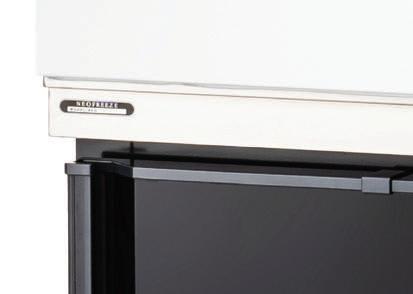


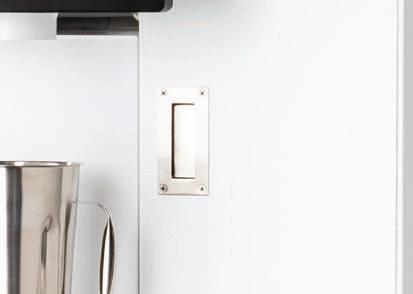
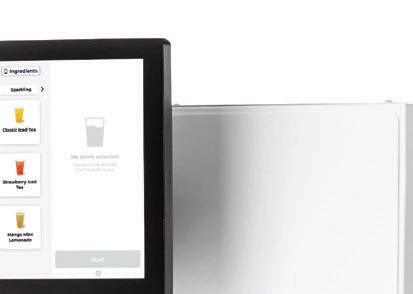
Iva Chen, who runs a Goldilocks Filipino Cuisine location at SFO Airport, south of San Francisco, was immediately taken with the DrinkBot when she saw it at a trade show. The machine’s footprint, combined with its contributions to speed of service, made it a perfect fit for an airport location.


“As soon as I saw a demo of the DrinkBot at a food show, I knew we needed to have it at our quick-service restaurant,” Chen says. “It’s been a great addition to our menu—we are now able to o er customized craft beverages made in under 20 seconds for our customers, who are always in a rush.”


These operators are experiencing the solution to the issue Hsu set out to solve when he conceived of Botrista Beverages in the first place. That’s not lost on Hsu, who says his company is constantly innovating to help its customers meet shifting market demands.
“Our flexibility in drink formats and equipment is expanding to meet operators’ menu needs,” Hsu says. “We strive to continuously improve and meet our customers’ goals, so that they can meet their guests’ goals.” ◗


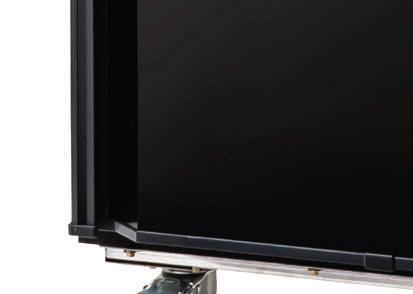
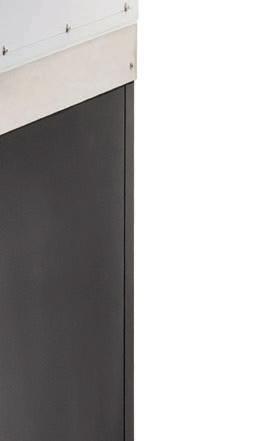

For more on adding craft beverages to the menu, visit botrista.co.


“The machine requires little-to-no training.”
ing hundreds of millions of dollars in developing the best plant-based food. We don’t have to figure out how to take it to the next level; instead we can be a gateway for people to eat the best of the best.”
Carin Stutz is the president and CEO of Native Foods, which offers a diverse menu featuring vegan comfort foods from burgers to entrees like cauliflower chickpea shawarma bowl, street tacos, and nachos.
Native Foods creates as many of its proteins in-house as it can, but like de Gruyter, Stutz is open to working with third parties. “If they can make something better than me and it’s good, clean ingredients, I’m interested,” she says.
Stalk & Spade is attracting a broad demographic. Younger generations, however, “are truly driving this trend,” Smiley says. “They are plant-positive and choosing to live that lifestyle. However, he adds, “people in their 50s and 60s are making the change because they want to be around as long as possible.”
De Gruyter’s goal with Next Level Burger was to appeal to a broad audience, too. “If you’re only attracting a slice of people, you’re limiting your income.” So, he aims to serve both the consumer who’s looking for a plant-based meal that closely resembles meat, and the vegan who doesn’t want to be reminded of animals.
And he has options for both on the menu.
Native Foods’ customers are also wide-ranging, and not just vegans, says Stutz, who notes today’s guest might tap plant-based foods just a few nights a week, while eating meat on other days.
Without appealing to all demographics, a restaurant chain won’t thrive, Stutz says. “Studies show that only 3 to 6 percent of people claim to be vegan, so plant-based restaurants that want to grow simply can’t survive on those numbers,” she says. “We therefore must make food that’s so delicious and approachable that everyone will want to try it. We must start by attracting the flexitarian.”
She also has items that resemble meat and some that don’t. “For the person who comes in for the first time we know certain items will be pretty close to what they’re familiar with,” she says. So staff are trained, Stutz adds, to steer the first-time guest toward more familiar items.
However, she points out, “the plant-based guest is the most adventuresome guest I’ve ever seen. Their willingness to try anything makes it really fun to put new items out there for them and they give you feedback.” Native Foods offers a monthly special, such as a fried green tomato BLT or a wasabi crabcake sandwich, as well as seven or eight dishes that change seasonally “so we can keep things fresh,” she says, adding “inspiration is everywhere, whether it comes from foreign cuisines or popular lifestyle foods.”
Stalk & Spade is largely focusing on urban areas for development, “because there’s more awareness there,” Smiley says. But he notes the suburban market “is where the real opportunity lies.” His first stores were in suburban areas, because “we always prove in a suburban market first. You don’t have a brand if it can’t be successful in the suburbs.”
He plans to grow via franchising, which will be about 90 percent of locations, and already has a large base of operators through his other concept, Crisp & Green. “They’re looking for more brands,” he says, “so we don’t need to go out and find new partners and it allows us to scale relatively quickly.”
Native Foods has 12 corporate locations and expects to open its 13th by the first quarter of next year. It may consider franchising down the road, Stutz says.
The chain has changed plans from urban to suburban. “The pandemic made us think about the diversity of our portfolio and we’re moving into the suburbs,” she says. “This is no longer a trend; plant-based dining is here to stay and there’s a lot of white space in the suburbs.”
Next Level Burger has nine restaurants, six of which are located within Whole Foods, but de Gruyter expects to grow mostly through standalone venues. He expects to quadruple his footprint from the beginning of this year when he had seven units, to 28 by the end of 2025, with an ultimate goal of 1,000.

“We’re looking to invest in a community that responds enthusiastically to our presence,” he says. “We’re not trying to be a commodity; we want to have relationships.” q











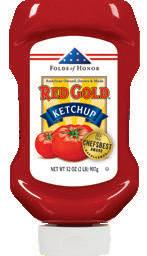
FOUNDERS: Antonio and Gelasia Cao
HEADQUARTERS: Miami
YEAR STARTED: 1972
ANNUAL SALES:
About $42 million systemwide
TOTAL UNITS: 20
is on top of the marketing department, and Fernando and Carmen run training and operations.
Santiago rose to CEO because of his military background, where he learned many of his management and discipline skills. And he knows his role. The restaurateur isn’t as talented at engineering cakes as his some of his family members, so he’s taken it upon himself to bring what Vicky Bakery has done for the past five decades and create a bridge to the next generation. And a big part of that is selecting the right franchisees to grow with.
“The American dream is that ability to start from nothing, pick yourself up by your bootstraps, and make something in your lifetime,” Santiago says. “And that’s what my in-laws did. It’s a sense of pride to be able to say that through franchising we are finding partners and investors that can go out there and take our concept because of the way it’s been set up. It’s become, in our limited experience, a very profitable business for those that decide to sign up with us.”
ALEX SANTIAGO WALKED INTO THE VICKY BAK ery business 30 years ago because he fell in love with his wife, Elizabeth, the youngest daughter of Cuban founders Antonio and Gelasia Cao.
Admittedly, he didn’t understand the company’s special nature at first, but he quickly came to realize just how much the neighborhood concept is part of South Flor-
ida’s culture. The learning process was as personal as it gets. Going back through baby pictures, he discovered the cake at his christening and baptism was from Vicky Bakery.
“I was born in 1975. This company’s been around since 1972, and it’s been doing amazing products ever since,” Santiago says. “Because I married the youngest daughter, I was the last one to come into the family. I’m still the rookie. I’ve only been here 28 years. I’m still in awe by all the knowledge and just the things that the family does.”
Vicky’s board of directors includes six members of the family: Santiago and Elizabeth; Pedro and Amy Cao; and Fernando and Carmen Oramas. Santiago serves as CEO while Elizabeth oversees human resources and account management. Pedro is in charge of business development, Amy
The growth will be meticulous. Vicky Bakery doesn’t want to open 100 stores, or even 50. It started 2022 with 17 locations and hopes to end next year with roughly 35. Currently, all of the concept’s locations are along Florida’s Southeast Coast, from Homestead to Boca Raton. More units are scheduled for Palm Beach, Orlando, and Southwest Florida. Santiago also mentioned that Vicky Bakery has been in talks with operators in Texas and Georgia.
The brand began with one store in 1972, which was actually Antonio and Gelasia’s third try, with the first two attempts burning down. The second outlet didn’t open until 1984 and the third came in the early 1990s as Santiago entered the business. Point being, Vicky Bakery thinks very deeply about growth before proceeding. The ongoing expansion phase,




The story of Atomic Wings is a remarkable one. The brand, created by Adam Lippin in 1989, is known as the first wing restaurant in New York City. It helped introduce authentic buffalo-style wings to the world.

Fast-forward to today. CEO Zak Omar and his brother, Ray, recently took over the brand with a franchisee-first mentality. As experienced franchisees, they have deep knowledge of the franchise model and what franchisees need in order to thrive.
“We really focus on franchisee success and satisfaction,” Omar says. “We stopped taking royalty payments during the earliest COVID-19 lockdowns. Those weren’t deferred payments—we stopped taking them altogether. During the national wing crisis, we also reduced royalties by half. We told our franchisees, ‘Hey, we’re in this together.’ We understand their cost burden, and we understand what it takes to run successful restaurants.”
With 16 current locations in the Northeast and over 90 more signed locations across the U.S., Atomic Wings is entering a phase of unprecedented growth. This growth has largely been spurred by the brand’s very selective Area Representative Program.
“2023 is going to be a year of aggressive expansion,” Omar says. “We’ve sold out several territories in the Midwest already. We’re looking for experienced operators all over the U.S.—people who know the restaurant industry and who know how to drive sales to their stores. We want to build this brand the right way from the ground up.”
That includes keeping construction costs to a minimum for franchisees. “We want to do everything we can to help our franchisees grow and get a return on their investment as soon as possible,” Omar says. “With our stores, we’re looking to create a friendly guest experience, and we’re hoping that translates across all of America.”
In many ways, it already has. In the last couple of years, Atomic
Wings has garnered attention from national media, from The Tonight Show with Jimmy Fallon to The Late Show with Stephen Colbert to Fox and Friends.
In addition to prioritizing franchisees, Omar attributes the brand’s success to its premium products. “To differentiate ourselves from other wing brands, our wings go through a series of steps before they ever hit the fryer,” Omar says. “Our product is always fresh, never frozen. We’ve also been able to reduce cook times from 12 minutes down to about four–six minutes due to our processes. It’s all about speed of service and convenience for our guests.”
The boneless wings and tenders are hand-breaded and hand-battered. (Grilled wings are also being rolled out in select locations.) The selection of sauces is huge, and Omar says about 95 percent of them are glutenfree. The brand recently introduced several new offerings, including a Nashville Hot line, a series of dry rubs, and aioli sauce for chicken tenders. Drive thrus—rare in the wing space—are also in the works.
“One of the things I love about this brand is that all the growth we’ve had has been organic,” Omar says. “We offer a superior product, and we treat our franchisees like a family.” ◗
Featured on national television multiple times, Atomic Wings is seeing explosive growth with a franchisee-first mentality.





and bowls, Moskow says, are mostly straightforward, “don’t require culinary prowess or training, and align with many people’s lifestyle choices.”
Take Rush Bowls, which is dedicated to healthy fruit and vegetable bowls. It launched in 2004 and started franchising in 2016. It has grown to 37 locations, with 35 franchised and two company owned, covering 21 states. In 2022, as of publication, the brand debuted five new outlets with 10 slated to open by year’s end, all franchised. And in 2023, it has ambitions to add 25–50 retail stores.
Andrew Pudalov, Rush Bowl’s CEO and founder, attributes its rapidly expanding franchising to the “rise in demand for healthy food within the [quick-service restaurant] space, as well as our smaller, more efficient store footprints.” His chain has capitalized on the delivery and takeout sector and technology, which now generates 30–60 percent of its revenue, depending on location.
During the height of the pandemic, sales at most established pizza franchises soared. Pizza was easy, and most of all, comforting, during a time of heightened stress.
But as conditions stabilize, health-oriented franchises are bouncing back and expanding. Pizza sales hiked during COVID because many people stayed home, didn’t want to dine indoors, and the product arrived via delivery “hot and ready to eat,” says Liz Moskow, principal at Bread & Circus, a food advisory company based in Denver.
An increasing number of customers worked from home and prepared their own lunches and dinners, which cut into the revenue at the healthier franchises, she says.
When safety fears subsided, though, many people had put on weight, wanted to lose it, and started returning to dining at more nutritious-based chains. “Taking time for a healthy bowl or salad at lunch fits into the ‘self-care’ trend that people are adopting into their everyday lifestyle,” Moskow says.
Moreover, franchisees left jobs that they felt trapped in, preferring to become entrepreneurs and run their own business. Smoothies
To become a franchisee at Rush Bowl “you don’t need to be a food connoisseur. We look for business experience and savvy,” says Pudalov, a former derivatives trader in New York City for 15 years. Its target audience is “young adults to people aged 50, who make Rush Bowls a part of their diet as opposed to the Subway sandwich model,” Pudalov adds. Its bowls are 16 ounces and about 500 calories, topped with granola or fruit. “Our busiest time is lunch,” he says.
Four of its latest locations include Birmingham, Alabama; Metairie, Lousiana; and Naples and Gainesville, Florida. “A lot of these communities are ill-served with health food, and there’s not a lot of competition. When a health food restaurant moves in, people gravitate there,” Pudalov says.
Rush Bowls specializes in bowls and smoothies, not salads or sandwiches, which differentiates it from competitors. Indeed, 80 percent of its business derives from bowls.

Despite plans to add 25 new stores or more in 2023, Pudalov says he can avoid the traps of growing too fast because the company is privately owned, carries no debt, has taken zero private equity money, and plans to scale at its own pace.
Locations are also rising at Vitality Bowls, which now has 130 outposts, seven corporate owned, and the rest

After a COVID rush to comfort food, health-driven brands are back on franchisees’ radars.
›
›
›
›
› Enterprise-wide reporting

› Receive daily provisional credit


› Eliminate bank trips


› Keep funds safe

As the cult-favorite sets off on a national growth push, there’s one secret-sauce element that won’t ever change.



 /
/






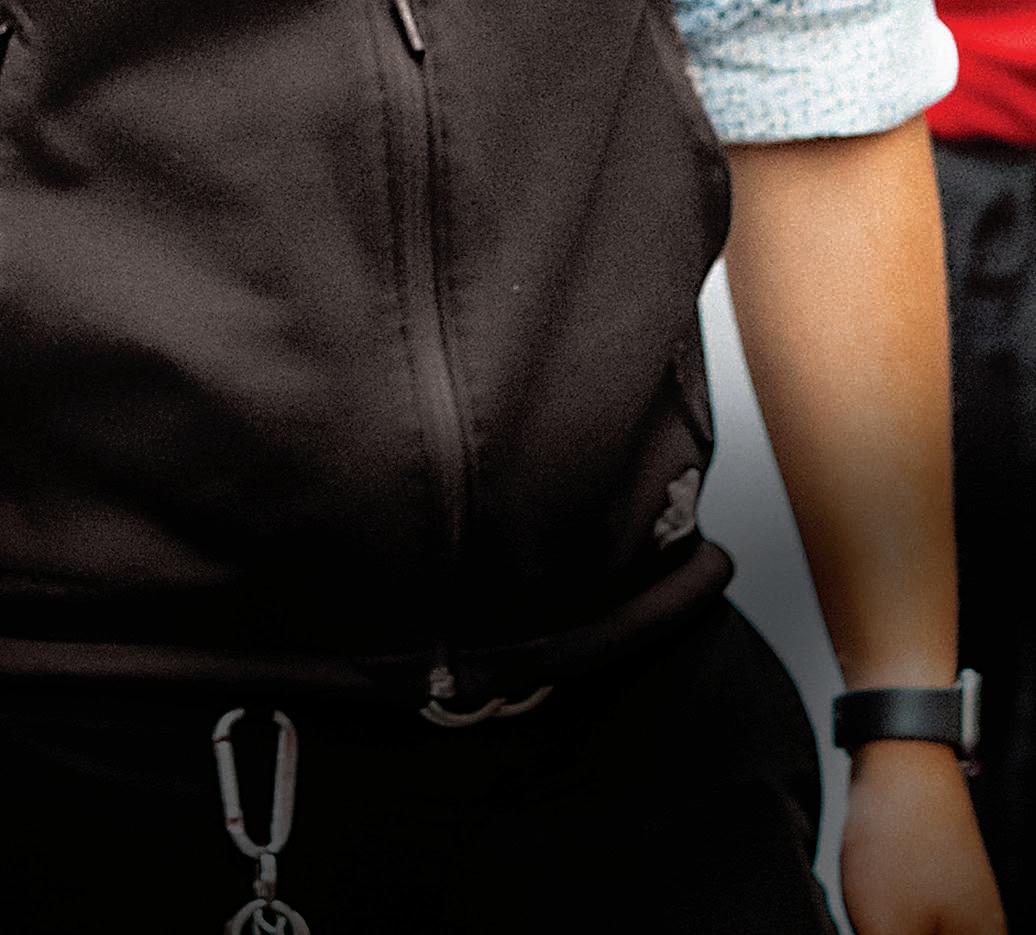 BY DANNY KLEIN
BY DANNY KLEIN
We’re talking 900 percent growth over the next two-and-half decades for the classic chain, which began in 1964 when Dick Portillo took $1,100 for a first home and used it instead to purchase a 6-by-12-foot trailer.
Portillo’s, when it hit Wall Street, boasted 67 units in nine states (there are now 71) But it had shipped some 2.7 million sandwiches via its direct-to-consumer channel across all 50 states. The No. 1 landing spot? Texas. This offered Portillo’s ammo to circle the Lone Star state, as well as the Sun Belt in general, as a near-term target to bring its hot dogs, Italian beef, and sausages to the masses.
Yet there was an underlying current to all of Portillo’s plans


that stretched beyond alluring financials (think average-unit volumes of $7.9 million). Among the brand’s secret-sauce traits, so to speak, was its employee proposition and a culture built through decades of centralized growth. It takes an average of 87 people to run a single store, which is miles clear of industry averages—roughly 23 employees in quick service, per Black Box Intelligence.





And still, in Q1 2022, Portillo’s hourly turnover rate hovered around the low-100 percent range, or 20–30 percentage points better than sector norms. Over the last year, more than 80 percent of Portillo’s managers were internal promotions—an equation that once was flipped.
According to William Blair’s yearly longitudinal analysis of restaurant employee satisfaction, based on more than 350,000 Glassdoor reviews, only Shake Shack and Portillo’s reported sequentially improving scores from elevated 2021 levels when it

When Portillo’s went public last October, it laid a roadmap to 600 locations in front of investors.
came to the percentage of workers willing to recommend their job to a friend. Portillo’s surged 47 spots to No. 40 overall.
Like its food and unique service ticks—rhyming employees comes to mind—Portillo’s reputation as an employer of choice has deep, 58-yearold roots in Chicago. Just as people expect legendary chocolate cake that has no business being this good coming out of a fast-food joint, the same is true of workers who sign up. They know Portillo’s is different than the pack.
But now the task becomes spreading that message to fresh markets and new communities, says CEO Michael Osanloo, a former P.F. Chang’s executive who joined the company in August 2018.
Where to begin? “The first war you have to win as Portillo’s when you go to new states, is the war for talent,” he says.
Thanks to the cyclical nature of the restaurant business and its seasonal, part-time workforce, the labor dynamic has always been a convoluted puzzle. High turnover and shifting demographics pressed operators well before COVID-19. And it’s only become more fractured. The Leisure and Hospitality Sector filled 31,000 jobs in August, a slowdown from 95,000 hires in July and 202,000 in the year-ago period. Restaurants and bars filled 18,200 jobs, per the Bureau of Labor Statistics, meaning the industry was about 600,000 jobs shy of its pre-pandemic levels.
To put it simply, the industry staffed back up quickly over the past year or so but nobody is quite sure where the ceiling is. Will there ever be as many jobs as before?
And so, there’s a quandary, Osanloo says, every concept needs to address if they want to staff in the “new normal.”
“People need to understand why Portillo’s,” he says.
The brand’s marketing function spends roughly 30–40 percent of its time helping HR and recruiting. As Portillo’s prepared to open its first Texas location, at the Grandscape complex in The Colony, it sent its “Beef Bus” mobile unit to “prime the pump,” Osanloo says. This went beyond engaging customers and giving them a preview of what’s to come, however. There were also team members in the branded trailer recruiting.
Portillo’s wasn’t only asking potential workers to sign up for a paycheck, either. “This will sound funny,” Osanloo says, “but one of the most important things to me is I want them to eat our food. I want them, if they don’t know Portillo’s, I want them to fall in love with the food first.”
The chain spends a “considerable” pool of money, time, and
effort to introduce itself to the local workforce. When Portillo’s opened in St. Petersburg, Florida, despite having units in Tampa and Brandon, Osanloo recognized the need to drum up awareness. They drove the Beef Bus there as well. Portillo’s hired aggressively and in advance of need. “We trained the heck out of people, and we talked about culture; explained what it means to be a Portillo’s team member and why our values are so important to us.”
The goal was to hire 100–105 employees. Portillo’s ended up with 125.

One of Portillo’s A1 aims is to take wage and compensation off the table. Osanloo says if he can look employees in the eye and know Portillo’s is paying them above-average rates, the brand can get down to what matters.
Indeed, Glassdoor data puts Portillo’s average crew wages ( based on reviews ) at $12, tied with Raising Cane’s. Only nine fast casuals were higher and one fast-food chain ( In-N-Out). For GMs, Portillo’s purported average rate of $81,800 trailed only Shake Shack ($84,000) and Tender Greens ($92,900) on the fast-casual side and sailed every fast-food brand.
Jill Waite, Portillo’s chief human resources officer, doesn’t mention dollar figures until the third point of a three-pronged answer as to why Portillo’s is beating turnover rates during a stretch when some industry peers are approaching 200 percent. Instead, she starts with a metric that says as much by the fact it’s even being measured as to what it turns up. “One of the things that we’ve learned from our team members is that they like having a best friend at work and someone that they can count on,” Waite says. Seventy percent of employees highlight this, per internal surveys.
Notes Terry Kendrick, an assistant GM in training: “I started off as a knucklehead on the south side of Chicago. Here, I’ve had so many father figures that gave me a chance. They’ve built a bridge to a whole new lifestyle I never thought I could accomplish.”
Before getting into some of the high-level approaches, here’s a view into what Waite and the Portillo’s team have cultivated:
• Flexible scheduling
• Up to $10 in free meals during shifts.
• Paid vacation for full-time employees; a 401( k) plan option with a discretionary company match, and financial support for workers facing hardship through the company’s Heart of Portillo’s fund.
• Opportunities for career growth with personal and pro-
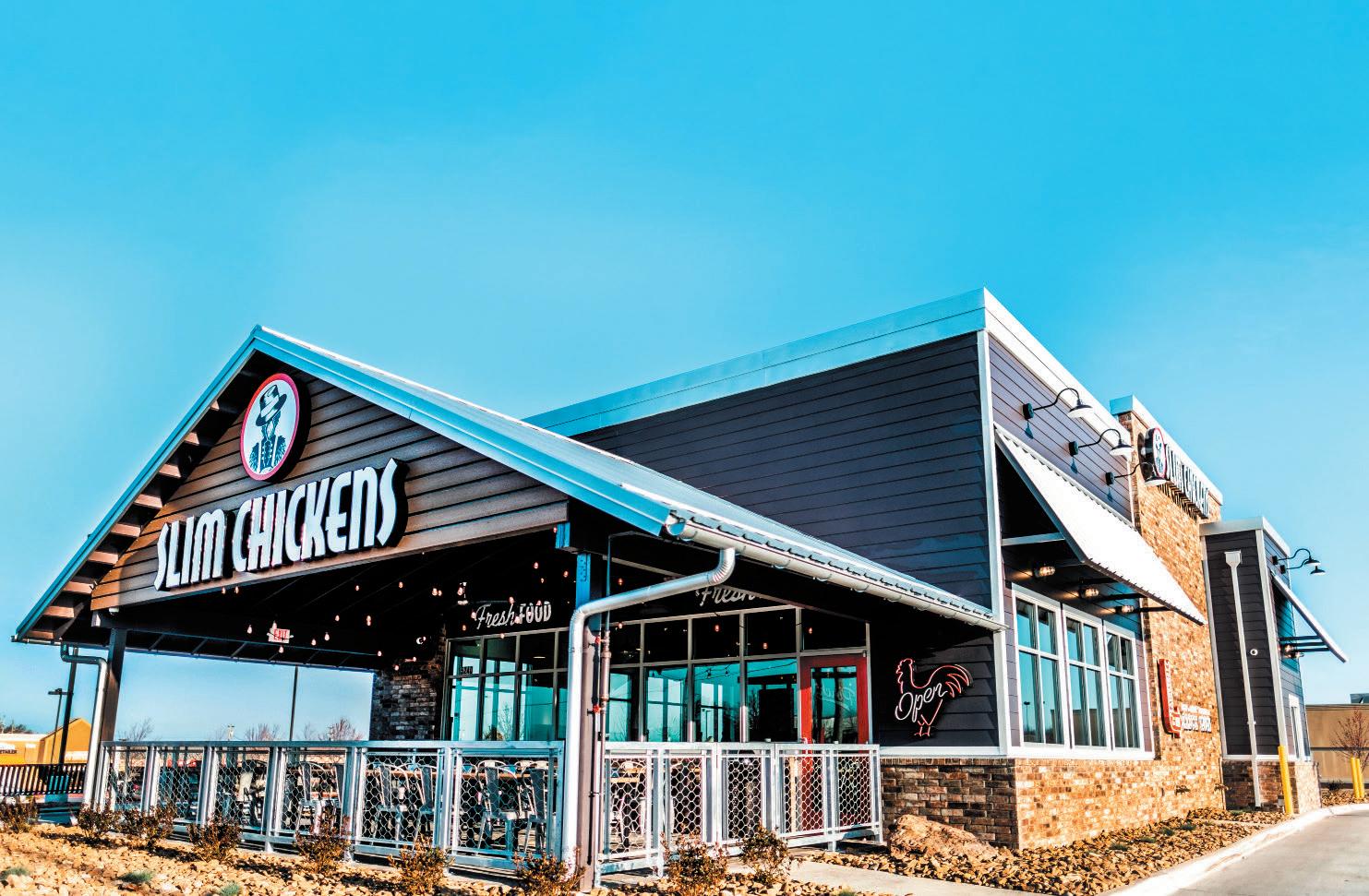


















































































































fessional training and development programs, including an accelerated leadership program for those eager to kickstart their restaurant career.
• Competitive pay at all levels (as mentioned), with a daily pay option, quarterly performance bonuses, annual PTLO stock grants for GMs and market managers, and extra pay for employees on major holidays—what Portillo’s calls “premium holiday pay.” This past holiday season, restaurant support center employees volunteered to help staff restaurants for two-day shifts.
• This is a perk rolled out during the COVID window where employees who work any of the calendar’s five key holidays earn $3 more per hour.
• Career interest days, individual development plans, and soon-tobe-introduced access to LinkedIn Learning.

• Paid parental leave, premier health insurance, flexible spending accounts, life insurance, vision and dental, and a monthly Gympass membership offering holistic wellness programs.
• Referral bonuses, which includes a combination of gift cards and Portillo’s swag. Last year, more than 30 percent of Portillo’s workers stemmed from employee referrals.

• The opportunity for hourly shift leaders to earn performance bonuses, like the rest of management.
• An annual GM summit where store-level leaders hear from corporate on the path forward as well as professional development times. GMs at Portillo’s can make well over $100,000 between base and bonus.
• Portillo’s Ignite Development Program provides all positions, lead-

ing up to market manager and general manager, a way to grow their career.

• The “Franks A Lot Fund” where each restaurant receives $250 per month to celebrate employees as they see fit, from meals to rewards as a means to recognition. This came from a survey where GMs suggested Portillo’s beef up its efforts. Some asked for $25 or $50 per month to honor hourly employees. The brand made it $150. They’ve come to life in everything from graduation parties to ice cream celebrations.
After speaking to culture and “bringing lifelong memories to life for both our team members and our guests,” No. 2 on Waite’s whiteboard is crystalizing the career ladder. A famed tactic of Portillo’s is its ability to cross-train. During the first 18 months of COVID, the brand didn’t lay off a single person, despite the fact its business disrupted dramatically, as it did industywide.
In the 12-month period that ended June 27, 2021, Portillo’s welcomed 825,000 guests. Drive-thru sales alone were $4.9 million per unit—more than double McDonald’s 2019 figures. Dine-in sales came in at $1.9 million and delivery $850,000. Before COVID, though, Portillo’s raked in $4.4 million within its four walls. “We trained them on how to do other things within the restaurants and that they could grow and that they could be more challenged,” Osanloo says. “But also, more valuable to the company.”
“Ignite,” he adds, speaking to Portillo’s development program, “is not here’s how you make a perfect hot dog, here’s how you make a perfect beef sandwich. It’s all about leadership skills. It’s how do
you coach in real time? When do you step in and when do you let somebody figure it out themselves? What’s the best way to staff around your team’s needs but also the business needs? What’s the best way to have a tough conversation with someone?”
These leadership traits, Osanloo says, are something employees keep asking for. “I’ve learned a lot about leadership and maturity,” echoes Zechariah Olson, a GM in training who’s first role was on the beef station six years ago. “I’ve also learned a lot about how to develop a team. When I was younger, I was very hot headed and immature, and I’ve learned a lot from the mentors I’ve had being here.” Employees realize the transferable benefit, regardless if they stick around at Portillo’s or decide to step-stone to another field. “Whatever you do in life, you’re learning leadership skills that will make you better,” Osanloo says. “And that’s because we’re investing in you. We want you to be the best version of yourself.”

This is far from lip service at Portillo’s. As noted, for senior hourly people and management, the brand offers an Ignite program to foster leadership. But the company also provided another set of wage increases at the beginning of July (the company spent $12 million to bump rates and add perks last year) And this latest round was predicated on people “stepping up.”
To explain, say there’s an employee who’s great at making beef sandwiches. After five years, they might see some slowing of wage growth. But if they learn how to make hot dogs, too, or “work the table,” as Portillo’s calls it, the brand will bump their salary because
they’ve added another skill set. If they learn how to do inside order taking, Portillo’s will do it again, and so forth.
“We’re tying wage increases to people who can become inherently more productive team members. And that matters because, we’re super busy most of the time,” Osanloo says. “But we still have some shoulder periods where if you’ve got somebody who is trained on both beef and table, you’ve got some staffing flexibility that you might not have had. And so, I love that because we’re paying people more, and we’re continuing to grow their wages, but they’re also learning more skills, learning different stations. Inevitably, and I’m sure you’ve seen this before, as people learn and grow, they enjoy their jobs more. They get more attached to the place.”
It’s a virtuous cycle Portillo’s continues to lean into.
“I’ve never worked for an establishment that’s such a family, such a core base, and there’s so much love and caring between employees, management, upper management, everyone,” says Cody Smith, an assistant GM in training.
Most people agree COVID, alongside everything else, did one sure thing for restaurants: it polarized winners and losers. That extends across the spectrum in terms of cleanliness, operations, and, without question, employee care. Waite says Portillo’s had a chance to stand behind company values and show its actions when the chips
All our architectural products serve a distinct, functional purpose. From louvers to wall coverings to every detail we perfect. But, at the same time, we never lose sight of the a ect a building has on people. The inspiration it provides. The satisfaction it brings to all who enter. For 70 years, we’ve based our success on the idea that putting people rst is the foundation for building better buildings. And, for 70 years, our partners have depended on us for architectural product solutions. Are you ready to think beyond the building with us? Visit c-sgroup.com.

were down. It provided paid leave, PPE, and created a “Wellness Team” to advise on and monitor the mental health of workers. Additionally, Portillo’s gave 100 percent meal discounts and gift cards throughout the crisis and funded bonuses to field managers. Portillo’s introduced a formal meal plan so employees could take food home to their families. If somebody wanted to step aside for personal reasons, Portillo’s allowed them to take leave, and still paid out benefits and offered gift cards for free meals. It then launched a foundation called “The Heart of Portillo’s Fund” to help workers with setbacks. Through this, the company raised more than $400,000 over 18 months and awarded about 40 grants for close to $100,000.
Coming out of 2020 depths and into the so-called “labor shortage,” is when Portillo’s conducted its “total rewards survey” referenced earlier. It was a straightforward ask: What do you want from the brand in an adjusted world?
The answer unfurled throughout the many benefits Portillo’s created, with a heavy focus on flexibility, development, and recognition. “It showed that we don’t just put our purpose and values on a wall, but we actually live them,” Waite says. “And an additional data point that showed that was we improved our engagement scores, year-over-year, which in a year that Gallup would say was a decline nationwide, worldwide, we actually saw an improvement.”
Why Portillo’s is opening its coffers for employees isn’t tied entirely to recruitment and retention. Waite says if the brand wants to deliver customer service in a way that separates it, especially amid inflation, employees need to like what they do and where they do it. It’s a challenging proposition to ask a stressed out and unhappy worker to be friendly to somebody walking in or pulling up to the drive-thru. That sounds simplistic in nature but the execution is far from it. Portillo’s has been working on ways to create efficiencies in-store so employees can shed menial tasks and concentrate on what makes the brand stand apart.
It gets as granular as catering boxes, which used to require employees to tape them up. A supplier and employee collaborated to develop a new “pop and lock” product where the box snaps in place. “It sounds crazy,” Osanloo says, “but it saves so many hours of labor.” Before, Portillo’s would have somebody spending three to four hours each morning putting them together.
Catering bread started to come in pre-cut, too. It used to be sliced in-house and packaged. Maxwell Street Polish Sausages— the brand’s offering born more than 75 years ago—also used to show up and get hand-trimmed by employees. Ends of the sausage were thrown away. Those arrive pre-cut and trimmed now as well. Portillo’s also moved to red onions machine cut by its supplier and vacuum sealed in bags.
Going back to the idea of fostering soft skills and setting employees up for future success, Portillo’s hosts “core interest” days where team members can raise their hands and ask about their futures. “What we’ve learned through our Ignite program is
as people are graduating and they’re promoting the energy in the restaurant, you can feel it,” Waite says. “From our recent engagement survey, it shows that our graduates from our Ignite program have a higher level of engagement that they then bring that back to the restaurant. What happens is when you visit a restaurant and say hey, tell me what’s going on, they’ll say Sarah is working on becoming the next assistant general manager. She’s in the next Ignite wave. It breeds a culture of continuous development and continuous improvement.” This creates a tribe-like culture that appeals to younger generations, Waite adds. The examples of success in-store are visible and apparent peer-to-peer. The notion of having a best friend at work, she says, has continuously shown up on surveys as a reason why people choose Portillo’s, and why they stay.
Osanloo says it’s no accident. Portillo’s recruits for “immutable characteristics.” Are they someone who aspires to being great? Do they treat people at work like extended family? Do they like being in front of other people and having fun?
Portillo’s trains GMs and assistant GMs on “what does a great Portillo’s team member look like,” Waite says. And what kind of behavioral questions can you ask to find that employee.
“We’re not really looking for what’s on the resume, but we’re looking for who that person is and what they will bring to our life our purpose and our values,” she says. “We ask questions through an interview guide and training of how do you create or how have you created lifelong memories for others? Tell us about how do you bring fun to work, or to your soccer team? We employ a lot of first-time jobs. Individuals who this is their firs- time job and they may not have a job experience. So tell us how you create fun on your soccer team. We’ll take them back on the line and see how they interact with our team members.”
“… I think that’s one of the key pieces that has allowed us to achieve the retention that we have,” Waite adds. “Because we’re not just looking for someone who can make a great beef sandwich.” The broad view is to hire a team with similar purpose. More than 56 percent of the company’s hourly employees are BIPOC, which is a reflection of something that’s going to factor in as the brand grows as well. Portillo’s hires individuals who reflect communities, so stores that open feel like a local brand customers and workers feel ownership of.
Osanloo says the company understands the challenge ahead, which is why Portillo’s has been unrelenting in its culturedriven approach. Consumers have become more demanding in COVID’s wake. And you could argue it’s tougher to work in a restaurant than ever given the myriad tasks and channels brands are operating through, from curbside to delivery. “There are just other career paths now where the work might be physically demanding but it’s emotionally easier,” he says. “You don’t deal with customers. And while it might be monotonous or boring, it’s easier in some ways. And we have lost people to that.”
“But I think, if there’s a secret sauce,” Osanloo continues, “it goes back to the culture that we’re trying to create and the values that we’re living.”
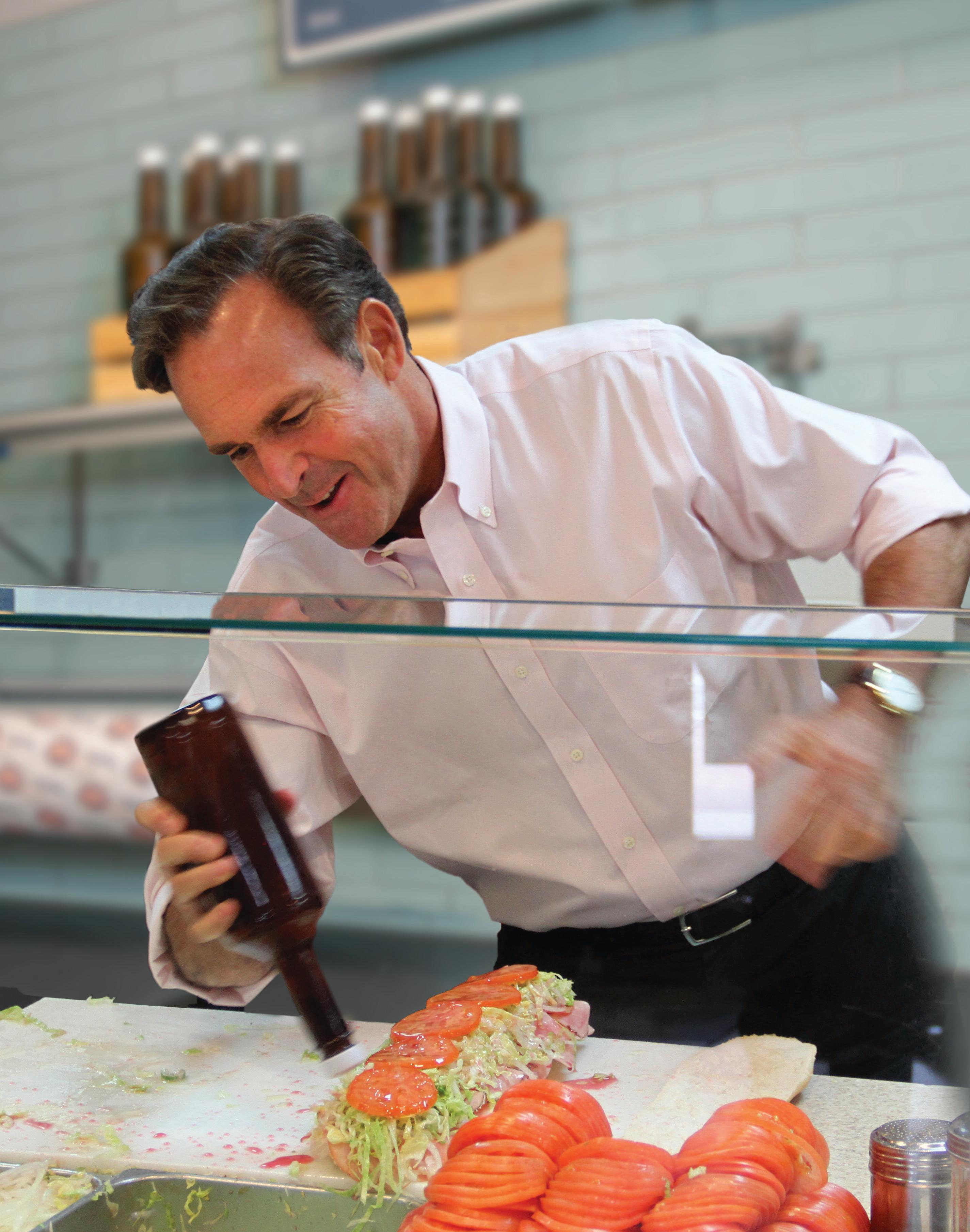
In today’s restaurant industry, how chains treat their employees is as vital as how they serve their guests. These are the brands setting the bar.




 / BY QSR STAFF
/ BY QSR STAFF




Hiring, retaining, and training workers has been central to the quick-service playbook for as long as restaurants have been in operation. Pre-COVID-19, it was arguably the lead concern. National unemployment was 3.6 percent in May 2019 and brands raced to amplify benefits, bolster recruitment, and invest in other people-centric initiatives designed to win a “war for talent” that was tightening by the day.



Since, however, terms like “The Great Resignation” and “Staffing Shortage” have become constants in the sector’s recovery. As of August, following a


month where restaurants added 74,100 jobs, the field remained more than 600,000 short of February 2020. In June, there were 1.304 million job openings in accommodation and food services and 1.004 million hires to go along with 918,000 separations. Wages, according to the Bureau of Labor Statistics, had climbed at a double-digit rate since April 2021 before retracting to 9 percent in June. Average hourly earnings fell in July for the first time since May 2020 (negative 0.16 percent), yet were still roughly 8 percent above year-over-year levels.
So the view looks something like this: Restaurants are paying more for labor, often have smaller staffs to operate with, and the nationwide unemployment rate, in July, was 3.5 percent.
What it adds up to is a higher stakes game than ever. The ability to identify talent, keep high-performing employees engaged, and create workplaces where people want to join and stick around, and, in turn deliver hospitality to guests, has become a differentiator that can’t be understated. To put it lightly.









In response to the continued importance of labor, QSR magazine, for the first time, put together its list of Best Brands to Work For. We polled restaurant brands and outside experts for submissions and then had a panel of industry pundits make their picks. The result: this group of 25 chains is QSR Best Brand to Work for Certified, and an example worth following for years to come. QSR will release this report annually. ➽


The pandemic hardly pushed labor to the forefront of operators’ minds.
LOCATIONS: 640
While every restaurant openly acknowledges it would be nothing without its employee base, Raising Cane’s takes that a step further with Cane’s Love—an entire department dedicated to showing appreciation to crewmembers.
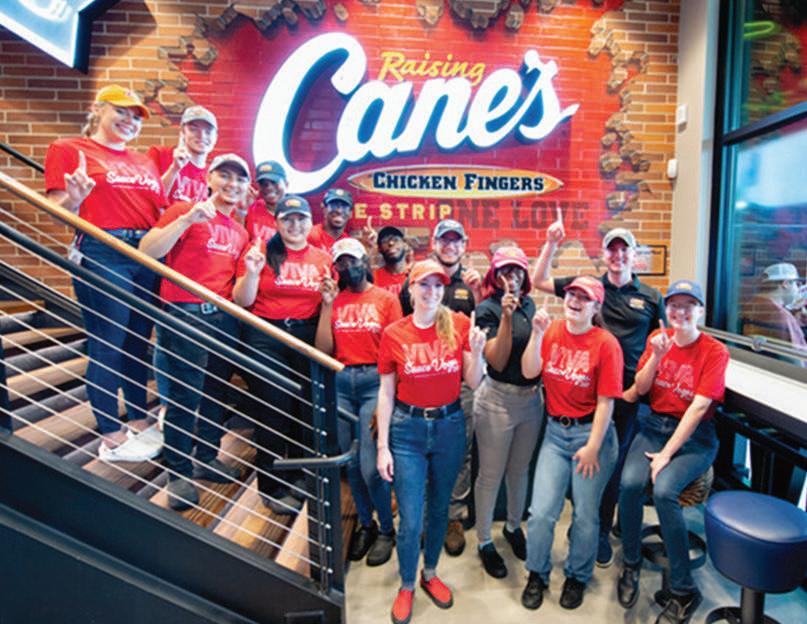
As part of this initiative, leadership writes roughly 4,000 thank you cards per week to employees. Also, during the final systemwide call of 2021, Raising Cane’s surprised workers with more than $100,000 in giveaways. This included dozens of employees receiving $1,000 bonuses, five receiving $2,500 to help with tuition costs, and two receiving $5,000 to help pay bills.
“Cane’s Love brings to life something that has been a part of our business for the last 26 years—our culture that is rooted in appreciation,” co-CEO and COO AJ Kumaran says.
Cane’s Love was created with the idea that all Raising Cane’s employees are fry cooks and cashiers, no matter where they’re at on the organizational chart. The brand put that philosophy into action in 2021 when 50 percent of corporate employees—including the heads of finance, legal, and human resources—entered understaffed restaurants for a couple of weeks to pick up shifts and boost recruiting. The end goal was to go from 40,000 workers to 50,000 in 50 days, and at the 48-day mark, there were 53,000 employees.
Raising Cane’s also takes pride in its Restaurant Partner Program, which began at the start of 2020. It’s designed to give employees more than $1 million in net worth within 10 years. To qualify, one must be a general manager for at least one year and show strong results. Once selected, they go through a 12-month probationary period before graduating into the official program. As of late August, there were 150 Restaurant Partners, including 40 that joined this year.

At the time of publication, Raising Cane’s created 4,500 jobs in 2022. Those thousands of employees are entering a brand that’s increased crewmember wages by $200 million-plus in the
past two years. The company also promoted over 1,200 employees this year. More than 40 percent of corporate leaders began as workers inside a restaurant.
LOCATIONS: 31
Hawaiian Bros recognizes restaurants are known for burnout, low salaries, and long hours. The chain operates with a philosophy that it doesn’t own employees and that it should respect their time. Every role—from cashier to
executive—is designed to be a fun and positive experience. The No. 1 priority is to put team members in the best possible position to achieve a healthy work-life balance. Hawaiian Bros believes in separating itself from the crowd by not providing a definitive script on how to fulfill employees’ needs. The company understands that narratives differ and so should its response.
CFO Breck Templeton, who joined Hawaiian Bros this year, referred to the brand as having “limitless potential” because of leadership and its employees. The foundation is built by a combination of superior food, service, and operations.
The results of these efforts speak for themselves, such as the brand having an internal promotion rate of 27 percent. Also, Hawaiian Bros boasts an average-unit volume of $4 million, which is on par with the likes of McDonald’s and Shake Shack. The concept experienced 39 straight periods of same-store sales growth as of late August, and it’s seeing a return on invested capital of 60 percent. In 2021, the company earned $55 million in sales, an increase of 169 percent year-over-year.
 ■ NOODLES & COMPANY
RAISING CANE’S
■ NOODLES & COMPANY
RAISING CANE’S
LOCATIONS: 457
Noodles & Company carries itself through four key values—We Care, We Show Pride, We Are Passionate, and We Love Life. The fact that “We Care” comes first isn’t a coincidence. It reminds everyone that Noodles puts its people first. Depending on their role, every team member may be eligible for medical, dental, vision, life insurance, counseling services, disability, and the company’s 401k match. Other key perks include mental health support, immigration reimbursement, stock purchase plan, tuition reimbursement, InstaPay and automated savings, and more.
Eligible employees can receive up to 100 percent of their pay for part of their maternity or paternity leave. And in the late stages of pregnancy, schedules can be reduced while still receiving regular pay. Noodles also offers up to $10,000 for adoptions or surrogacy.
Additionally, Noodles supports career growth and has increased the tenure of its operations leaders for the past several years. For instance, in Q2 2018, the average general manager spent 4.4 years with the brand; that grew to 5.6 years by Q2 2022. For managers, average tenure was 5.6 years in Q2 2018; but by Q2 2022, it reached 8.1 years. This year, the fast casual launched its General Manager Equity Partner Plan, which rewards general managers for their positive impact on the company. Workers who meet certain metrics are automatically enrolled and remain so as long as they are employed by the brand.

The chain’s efforts toward diversity and inclusion have improved year-over-year, including 53.2 percent female representation at the management level in Q2 of this year.
LOCATIONS: 164
Team Schostak Family Restaurants, which operates Applebee’s, Olga’s Kitchen, Olga’s Fresh Grille, Wendy’s, MOD Pizza, and Del Taco, has a common saying—“We won’t be best on the block until we are best in the workplace.” A major part of that promise is TSFR University, a two-day training program in which managers from all brands meet with senior leadership and learn about the company’s vision. On one day, executive chairman Mark Schostak presents the company’s history while CEO Bill Angott talks about Team Schostak’s five core values— Our People, Delight our Guests, Community, Act with Integrity, and Achieve Results. On day two, managers learn how to communicate and supervise a team, including coaching, directing, praising, and on-the-spot corrective action.

from within—more than 75 percent of managers started at the company.
“Our approach is to provide a career path that takes an employee from an entry-level position to director of operations, during which time the employee gains the necessary skills and qualifications that is key to their professional development as a whole,” says Christian Camp, Team Schostak’s vice president of “awesome people.”
Each year, the company holds an annual leadership conference to recognize top achievers. On a more routine level, Team Schostak uses internal platform TSFR Connect to showcase everyday wins. These small triumphs create daily culture and reinforce purpose.
The company also values candid conversations and feedback, which is why it surveys workers twice per year to establish where it stands. The end goal is always to make the lives of employees better, like the TSFR Care Fund, which helps those in need regardless of whether they contribute.
LOCATIONS: 314
Blaze Pizza emphasizes a “Free to Be You” brand promise in which workers don’t have to shy away from being their authentic selves. For the fast casual, it’s not about making a polished impression; the true objective is having a genuinely good time while providing the best services to customers. Tattoos, piercings, colorful hairstyles, particular style of dressing—all are welcomed with open arms. To make restaurants an enjoyable place to work, the company partners with employees to generate a new musical playlist that includes 80 percent of their favorite songs. The company recognized that moments of joy for guests and employees could be accomplished at the same time.
There’s also the LEAD program—a series of three classes throughout the year for high potential managers. The agenda covers execution, planning and organizing, situational leadership, and the seven habits of highly successful managers. Team Schostak emphasizes building talent
“It’s the underpinning of an entirely new customer and team member centric brand platform,” CMO Vincent Szwajkowski says. In addition to highlighting self-expression and individuality, Blaze offers a plethora of benefits for corporate and field staff members, including full health benefits, accrued vacation, wellness program, tuition discounts, employee discounts on admission to theme parks and hotel stays, birthday PTO, 401k with an up to 3 percent match, and more. Also, corporate employees are given unlimited PTO days. To ensure worker success, the chain provides development and coaching through its Blaze training program. And to recognize unforeseen life events, the company offers schedule flexibility. Upward mobility is encouraged, from working ovens to supervisor, manager, and even becoming a franchise owner.
LOCATIONS: 36
Regardless of an employee’s future, Hopoddy’s intention it to help motivated team members achieve their dreams. That could mean the fast casual is a steppingstone toward another career. It could also lead to Hopdoddy becoming a career choice. The chain has a team member to general manager program that develops knowledge, skills, and abilities. Sixty-four of Hopdoody’s general managers started as hourly workers.
One example is Chris Hill, who began as a bartender in Houston and is now the general manager of the brand’s certified training restaurant. Hill exemplifies a level of loyalty that Hopdoddy encourages and rewards. The company developed a 512 Program that offers five-year general managers a year’s salary bonus and 28-day sabbatical. So far, three workers have achieved this goal. To ensure its mission is being carried out appropriately, Hopdoddy holds an annual town hall at every location to interact face-to-face with employees and managers.
All full-time workers, whether at the support center or in Hopdoddy restaurants, receive health, vision, and dental insurance policies for under $2 a day. The chain also offers earned paid time off and paternal and maternal leave for birth or adoption after one year. Additionally, employees enjoy a 50 percent discount when they dine at any store outside of work hours.
LOCATIONS: 51
To prove how much it values all corporate employees, Dog Haus doesn’t keep a defined hierarchy structure or titles. The brand considers itself a horizontal organization in which employees work alongside partners and executives. At the corporate office, Dog Haus keeps a casual dress code and encourages wellness, like its “calm mat” for workers to meditate, take breaks, and stretch. The chain also pays for employees to participate in 5K/10K races.
The brand maintains an open-door policy so workers consistently feel heard and valued. In turn, partners welcome feedback and constantly check in with their employees for comments. This gives workers freedom to expand their role to as big as they aspire. For some, this could mean becoming a franchisee owner down the line. Dog Haus was founded by a small group of family and friends, and the fast casual intends to keep that feeling around its office space.

No corporate employees were furloughed during the height of the pandemic, and no one’s salary was reduced. Fewer than five corporate employees have left the company since it began more than 10 years ago, and there’s been a 15 percent-plus average pay raise for those who’ve earned it. Workers are covered by medical, dental, vision, and life insurance, and they also receive annual bonuses and presents. To
avoid burnout, Dog Haus offers floating holidays, generous PTO, summer Friday hours, an annual retreat, and free parking at Old Pasadena, a shopping center in Southern California. A kitchenette is stocked with snacks and coffee, with beer and wine on tap. For a mental break, there’s ping pong tables, happy hour, and holiday and birthday parties.
LOCATIONS: 150
When Flame Broiler asked one employee about their experience, they responded with “Flame Broiler has values, a mission, and a purpose that the whole team lives by. One of the values being ‘Exemplify with love.’ The company cares about their employees and gives everyone who is hungry to learn, the opportunity to grow and have a career with Flame Broiler.” In that statement, the operative word is opportunity. When the fast casual brings a worker on board, there’s an immediate focus on possible career path development. The team believes a solid cultural fit from its internal team member bench is the best way to approach filling leadership roles.
In fact, Flame Broiler has an internal promotion rate of 72 percent in 2022. Total headcount has increased 22 percent year-overyear, and 25 percent have been with the brand for at least 23 months. Diversity is a crucial part of this, too—70 percent of in-store leadership are women.
During the toughest parts of COVID, the chain doubled down on culture as opposed to profits and consciously decided against laying off or furloughing any employees.
LOCATIONS: 87
Once a new employee is hired, Jeremiah’s Italian Ice sends a letter welcoming them to its “Frog Squad.” It outlines the chain’s brand promise to provide personal and professional development opportunities. In turn, workers agree to abide by the brand’s core values, otherwise known as “Frogma:” Cool, Bold, Genuine, Vibrant, Generous, and Strategic. These standards are intended to instill ownership and promote empowerment among all team members.
From the beginning, Jeremiah’s dedicates itself to transparency. The company has “tasty targets” in which it teaches workers how to not only build sales and labor goals, but how to accomplish them, as well. Accountability is

important, too; workers who consistently reach and surpass these objectives are given a chance to receive a systemwide award.
These honors are distributed at the Franchise Frog Squad Operations Summit, attended by franchisees and area representatives. At this annual event, invitees attend leadership workshops and breakout sessions, where operators are able swap advice and business ideas.
Jeremiah’s gives out an Operator of the Year Award for the highest-performing manager, and announces recipients of the Frog Fund, a 1,000 scholarship that employees use toward their education. The financial sum is used for tuition, books/supplies, room/board, and other needs.
Mentorship and development are core to Culver’s and its family-rooted brand. Founded in 1984 by Craig and Lea Culver, along with Craig’s parents George and Ruth, as a single spot in Sauk City, Wisconsin, the chain still holds to many of its early aims. Among them, fostering a hospitality-first environment that spotlights the people delivering it. Cofounder Craig Culver told QSR earlier in the year “probably well over 100” employees in the “True Blue Crew” started as teenagers and climbed the ladder. Culver’s provides access to e-learning resources, workshops, equipment training, and national team training opportunities. One vivid example is the concept’s Culver’s Mentorship Program, which connects aspiring franchisees with an experienced leader to guide them through the ownership journey. More than 200 franchisees have graduated. This is one arena Culver’s separates in. It has career
and clear development pathways from entry level to management, but also to store ownership.
On the front lines, Culver’s boasts a Crew Challenge initiative that rewards the system’s top teams for excellence in service and hospitality, with a total of $100,000 in total annual prize money. Culver’s Foundation Scholarship Program has also awarded north of $5 million to support employees’ educational goals since 1993.
One thing Culver mentioned to QSR as well was the chain’s “heart,” and why, to a certain extent, it’s kept the brand behind the tech pack in the past. Although Culver’s has caught up on options like online ordering, the core remains unshakable. “In an industry that increasingly trends toward technology and automation, Culver’s is proud to continue championing faceto-face hospitality—and that begins with team members that feel heard, seen, and valued as people,” the company says.
LOCATIONS: 61
The story at PDQ is real-world experience and preparing employees for success, whether that’s within the corporate structure or their post-PDQ lives. One of the chicken chain’s benefits, for instance, is a scholarship program that invites and encourages employees to continue their education and career building in areas they’re most passionate about. PDQ offers anywhere between five to 10 every semester (47 thus far) During COVID, the fast casual also began offering hourly workers bonuses through a retention program. It provides quarterly and end-of-year awards. To date, PDQ has doled out more than $600,000.
In 2022, PDQ launched a wellness program with access to an activity tracker with team step challenges, nutrition classes and recipes, an at-home workout app, and Crunch Fitness discounts. PDQ also gave all workers access to an Employee Assistance Program.

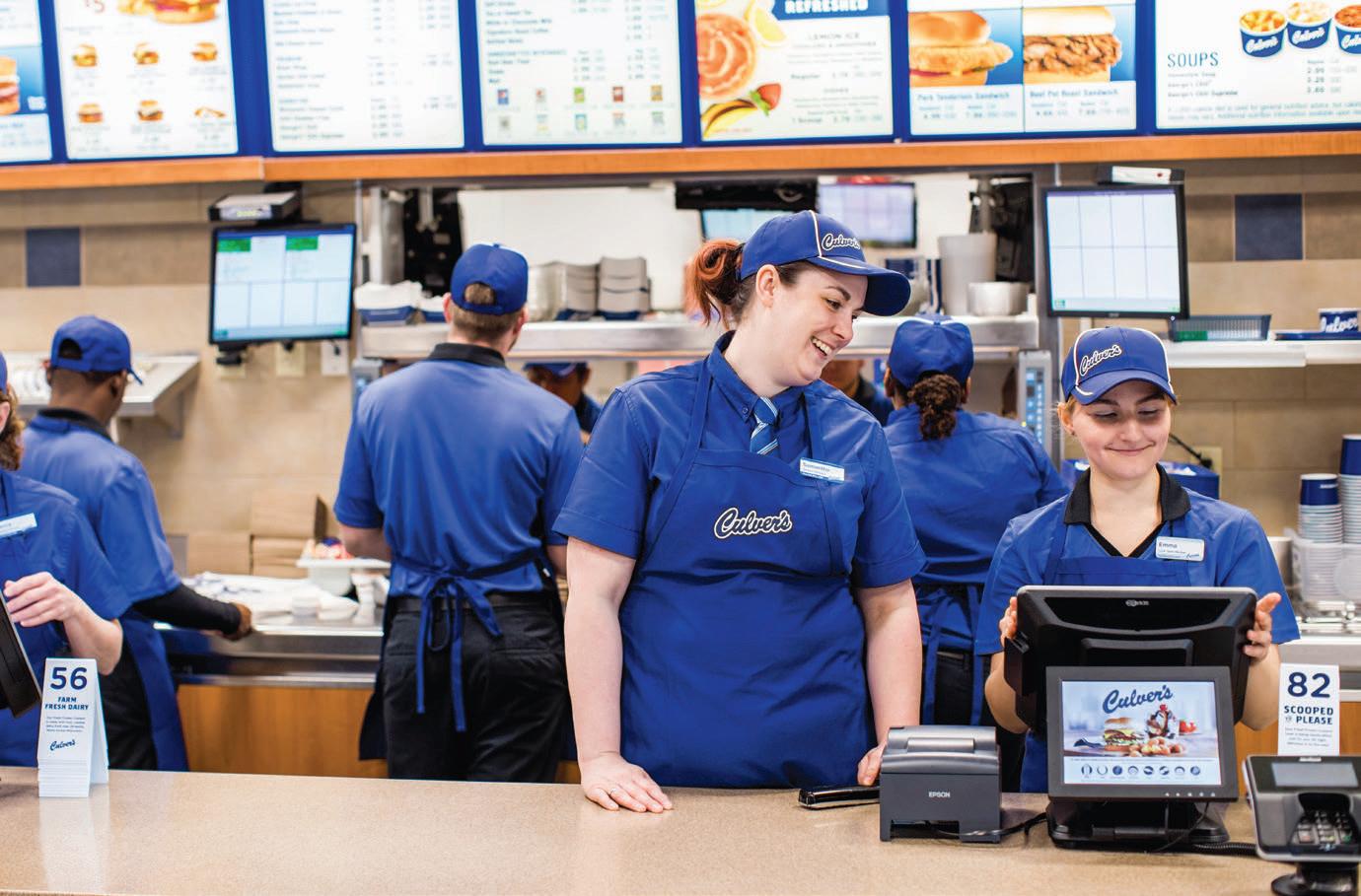
Additionally, PDQ recently unveiled a collective group of team members called “PDQ Champions” to provide feedback on behalf of their stores and to share insight. So how is this all panning out? PDQ’s annualized turnover today sits at about 110 percent, well below the sector’s average of 169 percent, per tracker Black Box Intelligence.
Incentivized performance is a big draw overall at PDQ. It presents employee challenges to specific goals, such as accurate and fast drive-thru service and loyalty member signups. When a restaurant meets the marks, PDQ hands out a monetary bonus or other prizes. According to analysis of Glassdoor data from financial services company William Blair, 71 percent of employees at PDQ said they’d recommend their job to a friend. In fact, the fast casual took the top overall spot for the first time in its category, moving up from No.7 in 2021. The overall employee rating of 3.9 ( based on reviews) shared top billing with Raising Cane’s. PDQ also finished top 2 in culture and values (4), senior management (3.5), career opportunities (3.6), and was No. 3 in diversity and inclusion (4.2)
LOCATIONS: 2,732 ( year-end 2021)
Given Chick-fil-A’s 97 percent franchised model, each restaurant offers a unique slate of compensation and benefits packages. But many offer perks from health coverage to 401k, and meal discounts. What is uniform, however, is the near-mythical nature of the chain’s hospitality. Chick-fil-A’s friendly staff and efficient operations is not an off-hand result. It’s been embedded in the company’s DNA for decades—a reality that’s only begun to feed itself over time.
Simply, at this point, employees who come
to work for Chick-fil-A understand what they’re getting into. And that bar is set.
The brand is closed on Sundays and offers one of the industry’s most viable scholarship programs through its Remarkable Futures program. Since 1973, Chick-fil-A has awarded more than $136 million to over 80,000 employees. The benefits, through leadership and True Inspiration scholarships, can be applied to any area of study at any accredited institution. More recently, Chick-fil-A unveiled a Community Scholars initiative in August that, unlike the Remarkable Futures, was open to all members of the community; not just employees. Chick-fil-A set aside 12 grants of $25,000 to “community service-minded leaders” in an effort to help further education. Recipients will also have the chance to participate in a one-year leadership development program. One unique note, too: the program was open to people of all ages. Alongside bettering the community, these programs invest in potential future restaurant-level leaders.
LOCATIONS: 9
Founded by Fran Paniccia and Michelle Walrath in 2015, with Chef James Tchinnis alongside, the growing fast casual has kept to its principles of inclusion over the years. The brand’s executive leadership today is 50 percent female, and eight out of nine GMs are as well. Organic Krush’s hourly turnover is 84 percent, which is miles ahead of sector norms. Sixty-five percent of all employees are diverse and 88 percent of GMs are promoted from within.

And it’s a process that starts with purpose.
“At Organic Krush, we are looking for ‘Krush Crew Members’ who are passionate about the power of whole foods, who care about how we take care of our planet, who believe we need to treat each other kindly, who care about their own health, and who want to become a part of something bigger,” the company says. Organic Krush encourages employees to stay curious and lead with positivity. “We will help them grow— personally, and professionally,” it adds.
The fast casual hosts a benefits survey annually to earmark future resources. Educational assistance was the top request in 2021 and Organic Krush awarded $1,000 in grants to employees. Team members also asked for more communication from the founders, which led to the chain partnering with goHappy, a frontline engagement platform, to use text alerts to reach workers on topics such as health, wellness, promotions, and more.
LOCATIONS: 261
The burger chain’s commitment to people goes back to the start, when industry luminary Danny Meyer and Union Square Hospitality Group founded the brand. And its evolved since into one of the sector’s most robust and diverse workplaces. In 2021, there were 2,835 internal promotions, with 56 percent going to women and 73 percent to people of color—nearly double the number from 2020. Shake Shack also increased the representation of people of color in leadership by 4 percent and women by nearly 7 percent.
Shake Shack’s guiding principle, the brand says, is on employee development programming. Over the past year and a half, Shake Shack expanded its Shift Up platform, which is a leadership development initiative that provides shift managers with tools to advance to managers. The brand doubled the number of graduates from the ongoing cohort. Additionally, GMs are offered equity grants.
On a granular level, Shake Shack offers about $15 per hour as an average national starting wage. It invests in diversity and inclusion in part through a formal program called, “All In,” which housed Shake Shack’s “Stand Together Series” in June 2020. The online platform enabled employees to share stories and included 36 independent speakers at all levels. More than 2,000 people participated as the company addressed social issues and broader themes, such as how to overcome dependencies and racial
issues. Shift Up is a pillar of All In. Employees asked for a more defined career ladder and the skills to climb it, so Shake Shack invented the 18-week paid development option with the goal of eventual promotion within Shake Shack’s corporate structure.
In its efforts to diversify, Shake Shack, in one example, teamed with the LGBT community center Ali Forney Center, which helps homeless youth, on recruiting. For the fourth year, Shake Shack earned a 100 percent on the Human Rights Campaign’s Corporate Equality Index for its support of LGBTQ+ team members in the workplace. Shake Shack has five Employee Resource Groups, too—options dedicated to women, Black/African American, Latino, Asian Pacific American, and LGBTQ+ team members. Grabbing headlines, Shake Shack also continues to explore alternatives to a traditional workweek. Throughout 2018 and 2019, it launched and piloted a fourday setup in select stores. It’s currently testing with hourly employees and managers along the West Coast.
LOCATIONS: 402 COMPANY-OWNED (5,535 franchised year-end 2021)
Wendy’s offers a deep suite of benefits for corporate workers. Also, there are employee resource groups available for support center employees, each with an executive sponsor from the compa-
ny’s senior leadership. One corporate employee noted, the Women of Wendy’s ERG “has really provided me a network of women as well as men, champions and mentors alike. We have development events but also just social events where people can meet up and have a Frosty, and we had a stylist come in and just get to know one another on a more social and personal level because we’re all going through a lot of the same things.” As part of Wendy’s Community Giving Program, every ERG was eligible to request a grant to support a charitable organization of its choice as well. In 2017, Wendy’s established WeCare to provide short-term financial assistance to employees within the system negatively affected by provincial state or federal-declared natural disasters or states of emergencies who were experiencing financial hardship. Since inception, about 300 individuals have received nearly $130,000 in financial assistance.
On a yearly basis, Wendy’s partners with a third party to administer its Voice of Wendy’s engagement survey for all company employees. Franchisees also have the option to engage in the survey for their own organization.
When it comes to the percentage of employees who would recommend their job to a friend (akin to a net promoter score), according to Glassdoor, In-N-Out has fronted the restaurant pack—all segments included—for seven straight years. It’s the only brand to maintain a top 10 ranking every calendar since 2016. Also, the number hasn’t dipped below 87 percent, which was the 2022 mark. It’s been 90 percent or higher four of those seven years. This past run, In-N-Out’s 87 was 8 percentage points higher than the next restaurant on the list, fullserve Barcelona Wine Bar.
There were a lot of factors driving InN-Out’s performance. The first might be an obvious one in its outlier in hourly pay at $17 versus an overage of $11.50 (the brand’s California base plays a role here) In-N-Out also topped the report’s annual average for general managers at $56,500, an 8 percent-plus bump relative to 2021. Wendy’s was No. 2 at $56,400. But outside of pay, the legacy, privately held brand was No. 1 in every metric tracked through Glassdoor in regard to quick-service restaurants: overall employee rating (4.3); culture and values (4.4); work/life balance (3.8); senior management (4.0); compensation and benefits (4.3); career opportunities (4.3); and diversity and inclusion (4.3) Ninety-one percent of employees at In-N-Out said they approve of
the CEO and 77 percent have a positive outlook of the company, which trailed only Cooper’s Hawk (78 percent) and Black Rifle Company (82 percent ) in Glassdoor data. Needless to say, one of the cult-favorite chain’s secret weapons isn’t such a mystery after all.
LOCATIONS: 347
White Castle is known for sticking with employees. More than 10,000 team members have been working there for 10 years or more, says Jamie Richardson, the brand’s vice president. Even more impressive, 442 of the 450 people in the general manager, district supervisor, and regional director positions started behind the counter at White Castle and worked their way up.

“The biggest benefit is feeling part of something a little bit bigger than yourself,” he says. “The fact we’re family-owned, it really is attractive to people because we’re taking a long view and I think that creates a different culture and atmosphere.”
Another benefit White Castle offers is a profit-sharing plan. Each year, the company puts a certain amount of money into a plan for workers. They become fully vested after about seven years. White Castle has also touted a health option since 1924. In addition to insurance, the company boasts an Employee Assistance Program, which can be a resource for full-time employees at no cost. This program offers counseling, legal resources, and financial support information. The resource is especially helpful during hard times for everyone in society, especially the pandemic.
“It’s just a little bit more of a personal touch—there’s enough to navigate just trying to get through each day, let alone having to do it all on your own,” Richardson says. Alongside the EAP, the brand each year gives out 25 to 30 Ingram-White Castle Foundation Team Member scholarships, which have been around since 1989. They go toward college, university, or career, technical, or vocational school and can be earned by team members and their family members.
The publicly traded coffee chain has among the loftiest growth targets in the marketplace today—4,000 shops in the next 10–15 years. And recent results support the reach; Dutch Bros. took 27 years to reach 328 locations, but opened 275 in the past three and half years alone. It also hit a record $1 billion in systemwide sales for the trailing 12 months in the second quarter of 2022. Throughout this surge, though, the brand’s labor chops haven’t been forgotten. Its trailing 12-month shop-level turnover in Q2 was a remarkable 66 percent. It entertained 64,000 applicants in the period and hired 3,500. For managers, the brand says, turnover was in the low double-digits and operator turnover was almost “non-existent.” In the past year, Dutch Bros. promoted 50 operators. As of June 30, 115 of these employees were running 336 company-run stores, which averaged out to 2.9 units per operator.
Dutch Bros. shined throughout Glassdoor’s data. The brand was fifth overall on employees who would recommend their job to a friend, at 76 percent, and fourth in regard to workers having a positive outlook (71 percent) Dutch Bros. held the top spot in Glassdoor’s “specialty rankings” for the second consecutive year, while notching the No. 1 or No. 2 spot in all five categories: overall employee rating (4.2); culture and values (4.3); work/life balance (3.8); senior management (3.6); and career opportunities (3.7 )
On that latter note, Dutch Bros. provides a clear line of sight upward with hourly employees across four steps—“Broista” to shift leader to shop manager to operator.
The parent company of Chuck E. Cheese, Peter Piper Pizza, and virtual brand Pasqually’s Pizza & Wings has one of the deepest employee packages in the business. Through a partnership with the University of Arizona Global Campus, employees and immediate family members can receive 40 percent off tuition, plus waived fees and free digital course materials. Additionally, in fall 2023, CEC plans to offer three eligible operations managers a chance to receive 100 percent of their cost toward the completion of a bachelor’s or graduate degree program at UAGC. The company’s CEC Cares Opportunity Scholarships range from $500–$5,000 and,

while meant to be competitive, don’t require an essay or feature right or wrong answers. Applicants are evaluated according to academic record, job performance, strength of application, and financial need. Also, CEC offers a Mike Tuck Memorial Scholarship, which was created in memory of an employee who worked at CEC for nearly three decades. Employees who work in a technical position and are pursuing a college degree can apply for the $5,000 scholarship.
These efforts are paying off: Over the past year, of more than 2,000 operations managers ( holding managerial positions at restaurant locations) across both Chuck E. Cheese and Peter Piper Pizza brands, 56 percent achieved their current positions through internal promotions. CEC’s GM turnover in the past 12 months was 23 percent.
As of the end of May 2022, 58 percent of CEC’s total workforce was female, including 51 percent of GMs. The company is composed of 29 percent Black, 18 percent Hispanic or Latino/a, and 10 percent of two or more races.
LOCATIONS: 14
its catering business, which allowed it to create new positions as well. “We create programs that allow us to honor our team members for creating outstanding customer experiences, a collaborative work environment, and a shared company culture of teamwork and participation,” says Stephanie Chusing, human resources generalis.
LOCATIONS: 13
As of Q3 2022, the fast casual appreciated a growth rate of 59.5 percent, based on percentage of jobs created since 2022. As it expands, internally and store count wise, Starbird is making sure to tune into its people. An internal survey earlier in the year showed 84.9 percent of workers were satisfied with their overall experience; 78.2 percent said they felt Starbird was an inclusive environment; and 75.7 percent would recommend Starbird to a friend or family members.
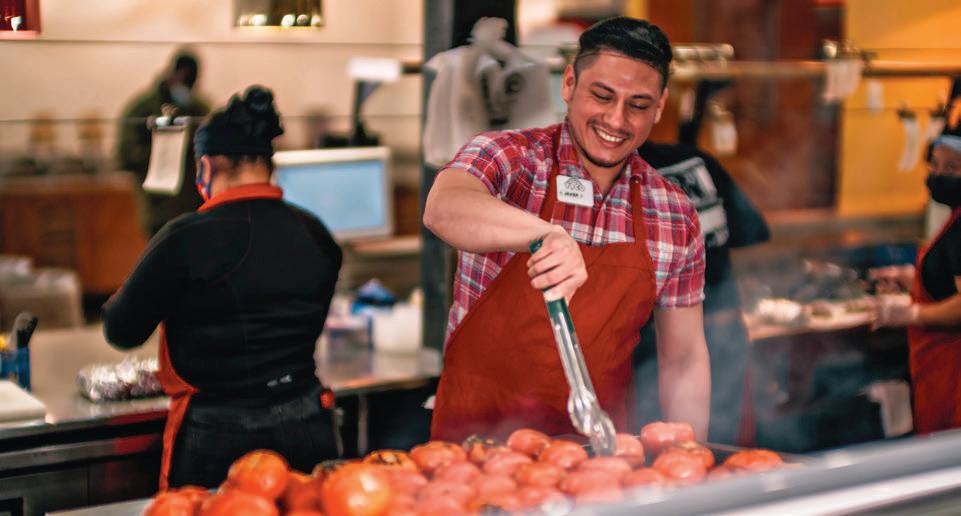
The jewel of Starbird’s offerings is its education programs. The chain is committed to contributing tuition reimbursements of $100,000 per year and up to $5,000 per worker every calendar (up to $20,000 over a four-year period). Program participation can be applied for any area of study at an accredited institution. This includes any two- or four-way college or university that offers bachelor’s, associate’s or trade degrees. The same goes for online programs, technical/vocational schools or language courses.
LOCATIONS: 135
LOCATIONS: 17
Original ChopShop is on the growth track. The company reached annual sales of $36 million in 2021 across $2.4 million AUVs. Same-store sales bumped 47 percent versus 2020 and 35 percent against 2019. Also, overall revenue last year lifted 47 percent over 2020. The fast casual says its top-line success has run parallel to its people strategy., Year-to-date 2022, Original ChopShop was generating comps at over 45 percent versus 2019. Meanwhile, it’s witnessing average tenure for GMs of three years in an industry where 12–18 months is closer to the norm. Sixty-three percent of all leadership roles have been filled by internal promotion.
CEO Jason Morgan has fostered a number of initiatives to court this approach, including a career pathing program that shows employees how they can advance from hourly operations to management; quarterly merit increase opportunities for salaried managers; a 401k program with matching; and a five-year service anniversary bonus of $20,000 for GMs. Additionally, Morgan introduced a comprehensive salary structure for GMs that allows them to earn $100,000 in salary and benefits annually.
LOCATIONS: 10
This year, District Taco became SafeZone certified, which means employees are educated about the LGBTQIA+ spectrum, microaggressions and how to handle them, and how to create a safe and inclusive environment. Employees have begun to ask for preferred pronouns during onboarding, and the brand says there’s been an noticeable difference in conversations in the office focused on the topic.
Founded by two friends, Osiris Hoil and Marc Wallace, the brand started from a used hot dog truck and is now plotting a franchise program. District Taco will continue to support a community-based brand, it says, and ramp up employee appreciation. This includes PTO to all employees and a Pioneer Program of peer-nominated rewards. District Taco stayed opened during COVID and doubled
The sandwich chain’s approach centers not just on physical and mental health, but overall sentiment and wellness. It’s the emphasis behind the community outreach program, where employees get paid a full day’s work to go volunteer wherever they choose. The approach has helped boost internal promotion rates, the company says. “We have people who run entire departments in our corporate office who started out as team members in our store,” it notes.
Career development has keyed the approach. Capriotti’s says employees look for clarity on advancement opportunity and its coaching managers to provide that information on day one. “The opportunity in addition to working with people who are positive, fun, and like family, are also among the reasons why people love working with us, too,” the company says.
When Nate Hybl put together his first investor pitch book, he placed a quote from Dale Carnegie on the cover: “Today is life—the only life you are sure of. Make the most of today. Get interested in something. Shake yourself awake let the winds of enthusiasm sweep through you. Live today with gusto.” Hybl says this culture-first construct began with gusto!’s workplace. Company-wide, its employee turnover rate was 108 percent in 2021. The brand offers paid-time off for employees in a shift leader role and above. Shift leaders receive five PTO days per year, managers seven, assistant operators 10, and local operating partners up to 15. In addition to work-life balance, gusto! stresses career development. Compensation is central to gusto’s offerings as well. The fast casual’s average hourly rate (tips included) lands around $15–16 per hour compared to the $11.05 average in Georgia. Each employee receives free meals on work days. Local operating partners participate in profit sharing, too, and receive 15 percent of net profits for their individual location. q





 / BY CONNIE GENTRY
/ BY CONNIE GENTRY



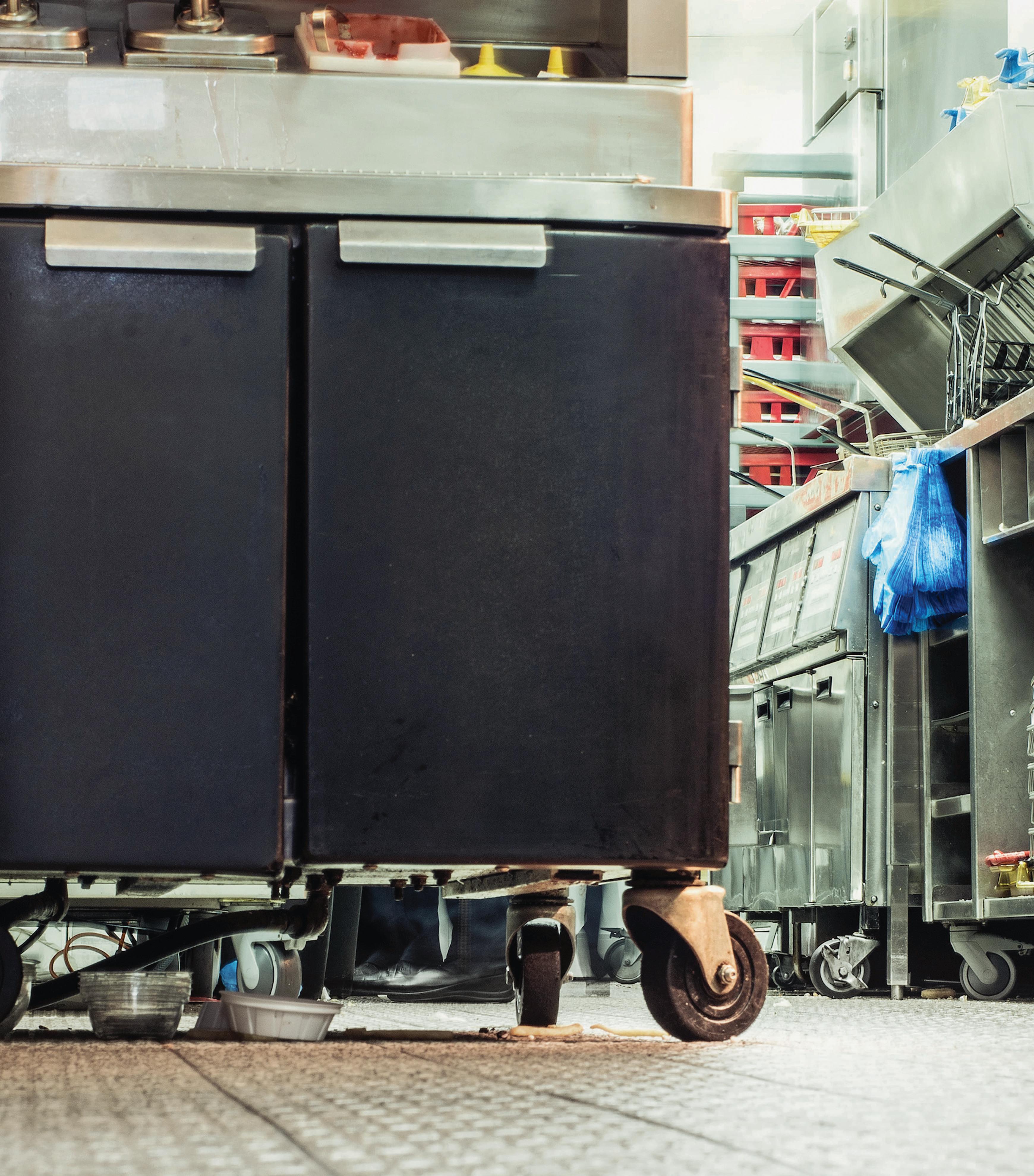
are
from decisions of desperation, brought on by the labor crisis, to envision a whole new silver linings playbook.
Now, the employee holds all the cards.
Customer service, brand integrity, menu consistency—all are subject to the whims and attitudes of employees. And those mediocre employees who would have been fired after their second noshow? You’re texting them to find out what it takes to make them stay: More money? Flex schedules? Benefits and perks?
Desperate times produce decisions of desperation—and that’s never a good thing for business strategies. The labor shortage has impacted restaurant operations in every market, every segment, every daypart—and done so to greater detriment than the supply chain disruptions, inflationary food prices, or restrictive pandemic protocols.
But all is not going up in smoke. The smartest sociologists say that when we reach a crisis point is when we start to become truly creative and innovative. And that’s where we’ve arrived with the labor crisis: At the tipping point for savvy operators to flesh out their silver linings playbook.

Regional brands are figuring out new moves to retain employees, the compromises that are worth considering, and how corporate owners and their franchise partners can share best practices.



Take everything you thought you knew about labor management, all those work ethic rules that were once sacred, and burn ‘em at the stake.
REGION: Wisconsin, Illinois, Indiana
LOCATIONS: 95 stores; 50 percent corporate-owned; 50 percent franchised
EMPLOYEES: 40 at corporate headquarters; 750 across corporate stores
cent year-over-year, which has reduced Cousins’ profitability by 1.5 percent, and that’s despite the fact that most locations have had to scale back the number of hours they’re open.
“That 1.5 percent would be even worse if we hadn’t [ increased ] prices as inflation occurred so it’s having a real material impact,” Westhoff continues. “The crazy thing is, even when we’re not working as many hours as we normally would, we’re paying so much more for the employees that it’s having an adverse impact on the bottom line.”
Cousins corporate stores are averaging a 99 percent up-time, meaning that most are open from 10 A M to 8 P M , against the goal of being open 10 to 10.
them geographically close together is why we haven’t had to adjust hours. Even when we had 10 to 15 people out with COVID, employees were willing to go from one store to another.”
“The mass [ labor] exodus during COVID is a reality. The estimates I’ve seen say that around 20 percent of restaurant workers left and aren’t coming back; we’re not down 20 percent in staffing, but we’re certainly down 10 to 15 percent,” says Jason Westhoff, president at Cousins Subs.
“Realistically, we’re constantly hiring. I was a CFO for 10 years and I’ve never seen anything like this: it is definitely an employees’ market,” adds Westhoff, who came to Cousins Subs 10 years ago after working with one of the largest franchise groups in Wisconsin, which owned 40 Applebee’s locations and 80 Pizza Hut stores.
“In this industry, 100 percent turnover is really good, and at Cousins we’re running about 120 percent hourly employee turnover—that’s about 13 percent less than where we were at the end of last year.”
Cousins Subs corporate growth model has shifted over the last couple of years and the parent company is buying stores from franchise operators who are looking to exit the system. “We’ve made it known to our franchisees that if they’re interested in selling, we’re interested in buying,” he says.
When he joined Cousins 10 years ago, there were 16 corporate stores; now there are 45, and 20 of those were acquired within the last two years. The number of employees across the company is down, but the average hourly wage is up 16 per-

“Our franchisees are more like 93 percent [up-time], because many are single-unit owners that have to cover extra hours, so they close early to give themselves breathing room. On the corporate side, we have the luxury of being able to shift staff between stores.”
While hourly wages are up significantly, the number of shift hours being covered by Cousins’ salaried employees are also up—and that, Westhoff notes, is where being understaffed has saved Cousins in labor expenses.
“Our standard workweek for a salaried manager is 45 hours, so one week they may work 40 hours and the next week 47 hours because they’re picking up shifts when staff are not available,” Westhoff says. “We’re also paying $100 bonuses per shift for hourly people who are working their regular shift at one store but are willing to work a shift at another store to fill in when workers are out.”
Multi-unit franchisees also have the option of staff sharing, and Cousins franchisee
Tom Jones is one of the lucky owneroperators who has defied the odds and remained open 100 percent of the time, never having to reduce hours. His five franchise units have stayed open seven days a week, 9 A.M. to 10 P.M.
Jones credits loyal staff, teamwork, and the close proximity of his five stores to one another: “All of the stores are within a 15-minute drive of each other, having
Although he also lives within a 10to 20-minute drive of each restaurant, you won’t find Jones making sandwiches or running the register—but he does stay actively engaged in hiring staff and meeting weekly with his managers. That hands-on leadership is key, and in Jones’ case, it’s a deep-seated commitment. He’s been part of the Cousins team for 24 years, since his first job as a 16-year-old, through the company’s tuition-reimbursement program that led to a marketing degree and a job at Cousins corporate—and ultimately to purchasing his first Cousins store in 2006.
“I’ve always taken hiring seriously and I’m always looking to acquire new talent; in fact, I’m never not hiring,” Jones says. “It’s better to be overstaffed than understaffed. Although labor has never been higher as a cost, I would rather have a few extra bodies than have employees burn out.”
Part of his HR strategy is making sure the employees he wants to keep are the ones who want to stay. While wages have gone up across the industry, Jones decries the trend to start quick-service workers at $15 to $17 an hour.
“You can’t have these set wages for everyone; I offer what is fair and what I can afford, so I don’t start everybody at $15 an hour. I know my employees’ talent level and if someone is really great I pay them more,” he says. “One thing that distinguishes us from [Cousins] corporate stores and from operators like Jimmy John’s and Jersey Mike’s is that we offer our benefits package to all of our fulltime employees.”
Counted among full-time staff is anyone averaging more than 30 hours a week, and they receive paid time off; health, dental, and vision insurance; and 401k with employer match.
“Corporate and the [national] brands gear their benefits packages to full-time salaried managers; our benefits are geared to all full-time employees, including cashiers and sandwich makers who don’t want to go into management or leader-
The best in QSR need the best in digital menu boards

ship roles—some of these team members have as much tenure as the managers,” Jones says.
He employs 110 people across his five stores and systemwide his franchise group produces $5 million a year, with an AUV of $1 million.
The first step to solving the labor shortage, Westhoff says, is retention. Retaining people is easier than hiring, and it’s especially important to retain the good ones. But even retaining bad employees, until you find someone to replace them, is sometimes necessary.
“There used to be a bottom 20 and a top 20, those days are gone,” he says. Enhanced compensation packages, bonus programs, and flexible schedules are all part of the retention strategy. Even so, it’s an uphill battle: In August, Cousins Subs was looking at hiring 90 managers across the third quarter—roughly one new hire a day.
For frontline staff, two incentives Cousins has recently implemented are daily pay, which allows workers to capture 40 percent of their wages on a daily basis, and a shift gamification program that rewards employees just for showing up.
Roughly a third of its employees are enrolled in the daily pay program and those participants average taking money out twice a week. There’s no charge to employees if they wait until the day after their shift to take the pay, but there’s a $3 transaction fee if they take it the day of the shift they’re being paid for.
“The shift gamification rewards program is run by a company called Honor Roll and employees who are on time for every shift in a week can redeem the rewards for gift cards,” Westhoff says.
It’s an incentive for employees to play the long-game with their jobs, but it’s not cheap, essentially costing Cousins Subs $14 per employee per month.
“It’s a pretty serious expense and when you add it up it equates to a 25-cents per hour raise for all our employees, but we figured it was a better use of the money than giving everybody a 25-cents per hour raise because it rewards employees who are more engaged, and the more engaged employee is typically the bet-
ter employee, so it’s a good way to retain your good employees,” Westhoff explains.
“We’re just betting on the fact that we’re going to improve our retention rate, or reduce our turnover rate, to the extent that this program pays for itself.”
REGION: Ohio, Michigan, and entering Florida LOCATIONS: 40, Two corporate and 38 franchise-owned EMPLOYEES: Corporate operation has 37 employees; a typical store has 25–30 employees, primarily part-time
which requires some modification and foresight with packaging, but it enables an employee who was tied up with prepping to work in other areas.
That’s one of his remedies for the current debacle, but another is leveraging technology. Now, one out of two guests are placing orders via the Beyond Juicery app or its in-store kiosks.
“Pre-COVID about 10 percent of our orders came on the app; now at least half the orders are placed that way and it has cut our needs for in-house help by about 50 percent—and I don’t think it has impacted service at all,” Alanis says. “Oh, and the reason guests choose to order from a person is because they want to talk to somebody: Customer engagement matters more than ever.”
REGION: Nationwide, primarily Southeast region LOCATIONS: 300; 10 units are corporate-owned EMPLOYEES: About 275 corporate employees/an average Cicis has 22–30 employees
When he looks around the industry at how other brands are reacting to the labor shortage, Mijo Alanis, who cofounded Beyond Juicery + Eatery with his wife Pam Vivio, believes that making fewer employees do more work is not the answer. Neither is closing stores, which creates inconsistency and leads to consumers doubting the brand.
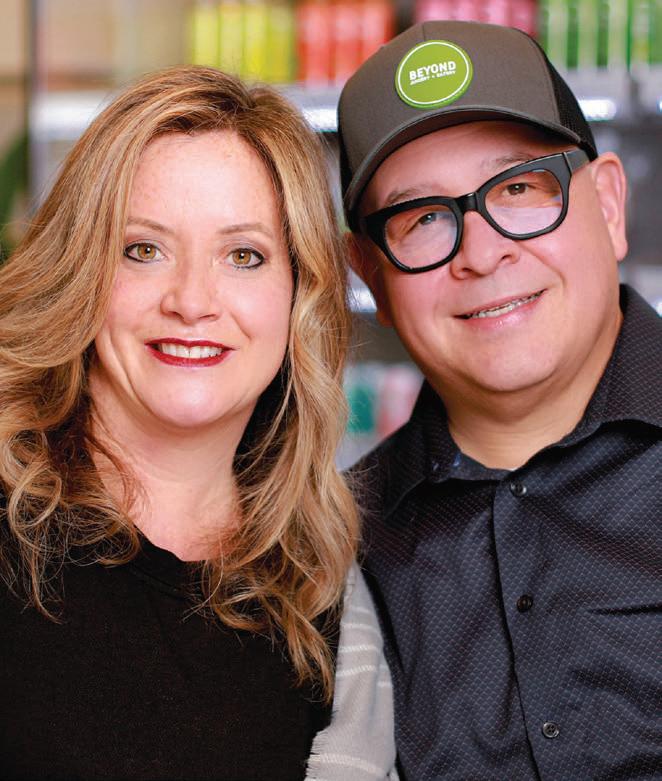
“This is an opportunity for a brand and store location to shine,” he says, noting the prevalence among other brands to reduce hours and overwork staff.
The answer isn’t working harder, it’s working smarter. The question he’s tackled: “How do we eliminate labor from the stores?”
It’s simple things like having prep work done before ingredients arrive at the store,
“In the first quarter, the company was down 3,000 people across the entire brand, but that was fairly common across the industry,” says Jeff Hetsel, president of Cicis Pizza. “We’ve had relatively low turnover—I’ve been with the company 30 years; Walter Rosales, our director of training, has been here 19 years. Still, after COVID, the competition in the quickservice industry was fierce so we had to reevaluate our strategy and understand how critical it is to bring new folks to the brand.”
He credits Rosales for coming up with the solution: Cicis hosted a “Hiring Day” system-wide, with corporate staff joining franchise operators to promote and host the event. Twenty-four hours before Hiring Day, 12,000 applications had poured into the system.
“Operators met with different levels of success on Hiring Day, some hired eight or nine people, others only hired two or three, but we had people in the stores ready to make hiring decisions on the spot,” Hetsel says.
“We divided and conquered the problem, focusing a lot of efforts on stores that were most understaffed because some


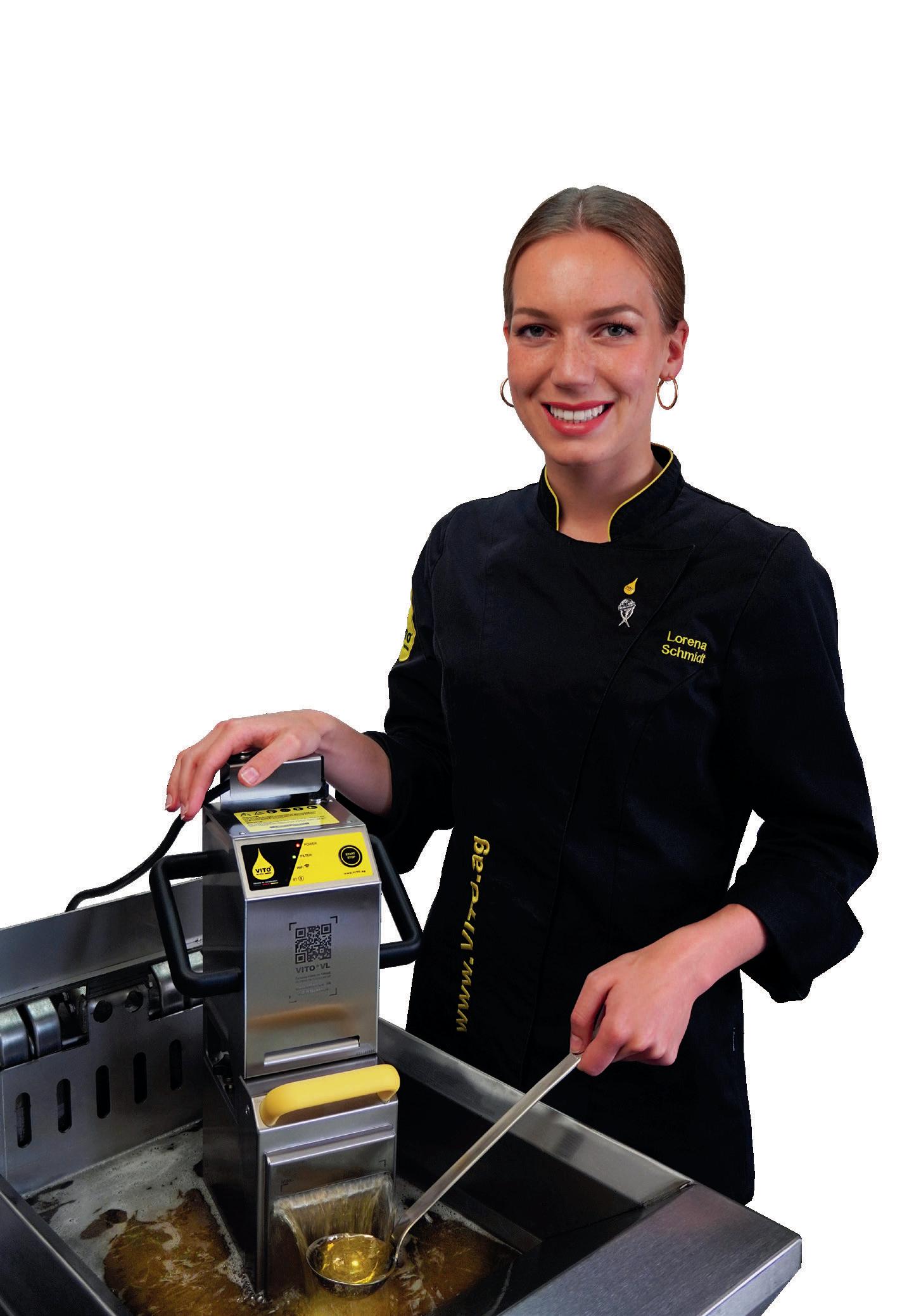


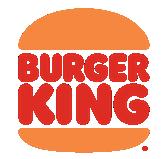











areas were hit harder. Stores in Orlando, south Texas, and the Eastern [ U.S.] were the most short-handed.”
Interviews were held in the restaurants, which stayed open for business throughout the day, and candidates coming in to interview were treated to a drink and the buffet.
“Everyone took part in it—key corporate employees, franchisees, store employees—it was a team effort and we did roughly 40 interviews throughout the day at the restaurants. Since each store has 150 to 200 seats, there was plenty of room,” Rosales says. “When we onboarded the new hires, we started up to three people a day.”
Overall it was a success; and the $100,000 spent in promoting and executing the event was deemed a value with many of the promotional signage remaining in stores to promote hiring year-round.
“We’re definitely going to repeat it, probably the same week in April each year,” Hetsel says. “We had walk-in applicants the day of the event, as well as those 12,000 online applications, and stores continued to have new applicants for days and weeks afterward.”
REGION: Nationwide, primarily California
LOCATIONS: 350 total, 35 corporate-owned
EMPLOYEES: 8–12 per store; 2–5 per food truck
they want. That’s the perspective Wetzel’s Pretzels CEO Jennifer Schuler brings to market.
“People want purpose and autonomy in their work, and they want a path to grow and be paid fairly,” Schuler says. Her plan: Give employees more opportunities to grow within the company.

“Store managers can make great owner-operators,” she says. But many of Wetzel’s best corporate managers didn’t have access to the capital needed to invest in a franchise.
Schuler’s fix: Food truck franchises, much less expensive than a brick-andmortar store and a great gateway into ownership. “It’s exciting for employees to have an entry point and food trucks represent a new opportunity for growth, both for the company and for employees to be able to grow but stay within the company,” she says. “Capitalism can be a force for good; a corporate manager can continue to work within the Wetzel’s system and also own her own food truck.”
There was a time late last year and into Q1 2022 that Wetzel’s was having to do more with less, when staffing was running short. By early summer, that had changed and Wetzel’s was again fully staffed in its corporate stores. “Where we stand apart from other organizations is that the average tenure for our corporate operations team is 10 years,” Schuler says.
REGION: Seven states, primarily California LOCATIONS: 110, one corporate
EMPLOYEES: 15 is average at each store
The labor market hasn’t fazed Pizza Factory’s growth. The 110-unit brand has added 21 franchise groups in the past five quarters and Steve Gibbs, vice president of operations, predicts they’ll have 200 stores open within three years.
owner-operators may not have hired new staff for years, not until the pandemic sent people migrating to live with relatives or looking for greener pastures in other industries.
“The old days of someone walking in the door wanting a job are gone; we’ve done a lot to help educate franchisees on new ways to hire, like using TikTok—and yes, we’re finding adults on TikTok not just kids,” Gibbs says. “If you don’t make it easy to get talent, you won’t have talent. What people want is to send a text that they’re interested, come in for an interview, and get hired on the spot.”
To help incentivize employees to stay, Pizza Factory has a tip-sharing policy. “It’s an unexpected benefit for an employee to make an extra $250 in a week,” he says.
One of the essential positions to keep filled has been delivery drivers, and Pizza Factory has successfully navigated that conundrum by finding business partners to job-share drivers. “Auto parts stores make great partners; they have drivers deliver parts and those drivers are done by 5, which is when our pizza stores get busy,” Gibbs says. Another job-sharing partner: breakfast restaurants. Their employees may need more hours and the business models of the two dayparts complement each other. “We’ve been working to attract more multi-unit franchise groups, one of our new franchisees has 20 Wingstop locations. The goal is to synergize and leverage different brands in the same trade area; they already understand the market and they can maintain [efficiencies] with centralized operations,” he says.
Pizza Factory has met the challenges of the labor shortage without flinching, but with most of its stores in California, what concerns Gibbs is the impact that the Fast Food Accountability and Standards Recovery Act will have on the industry. Governor Gavin Newsom signed the bill on September 5, making it the first bill in the country to enact specific rules and standards for fast-food workers.
Fundamentally,
That’s not to say it’s been easy. One of the biggest challenges they’ve faced is that 64 of their 109 franchise units are single-unit owners. On the positive side, that means they know their employees, but it also has a potential downside: Those
One of the tenets of the FAST Recovery Act is that the minimum wage for fast-food workers could increase up to $22 an hour in 2023, almost $7 above the existing minimum wage. q
the solution to labor challenges is as simple as giving people whatConnie Gentry is a regular contributor to QSR and is based in North Carolina.

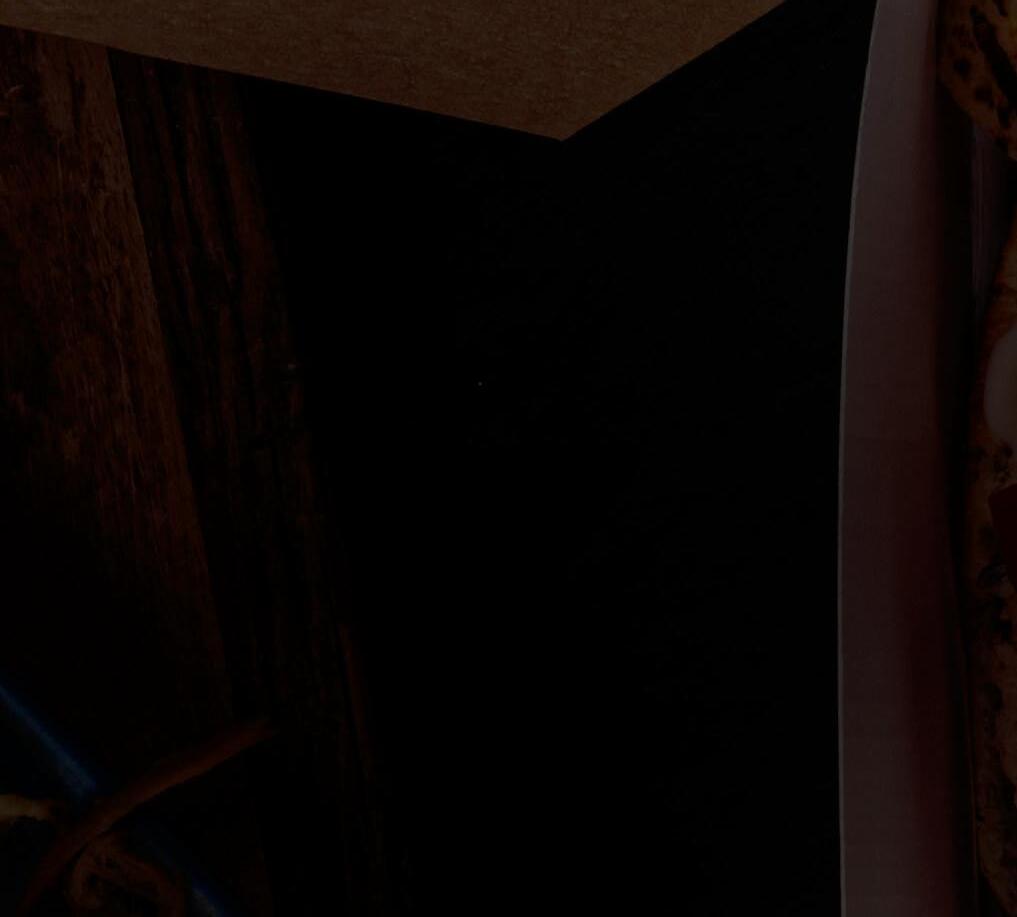







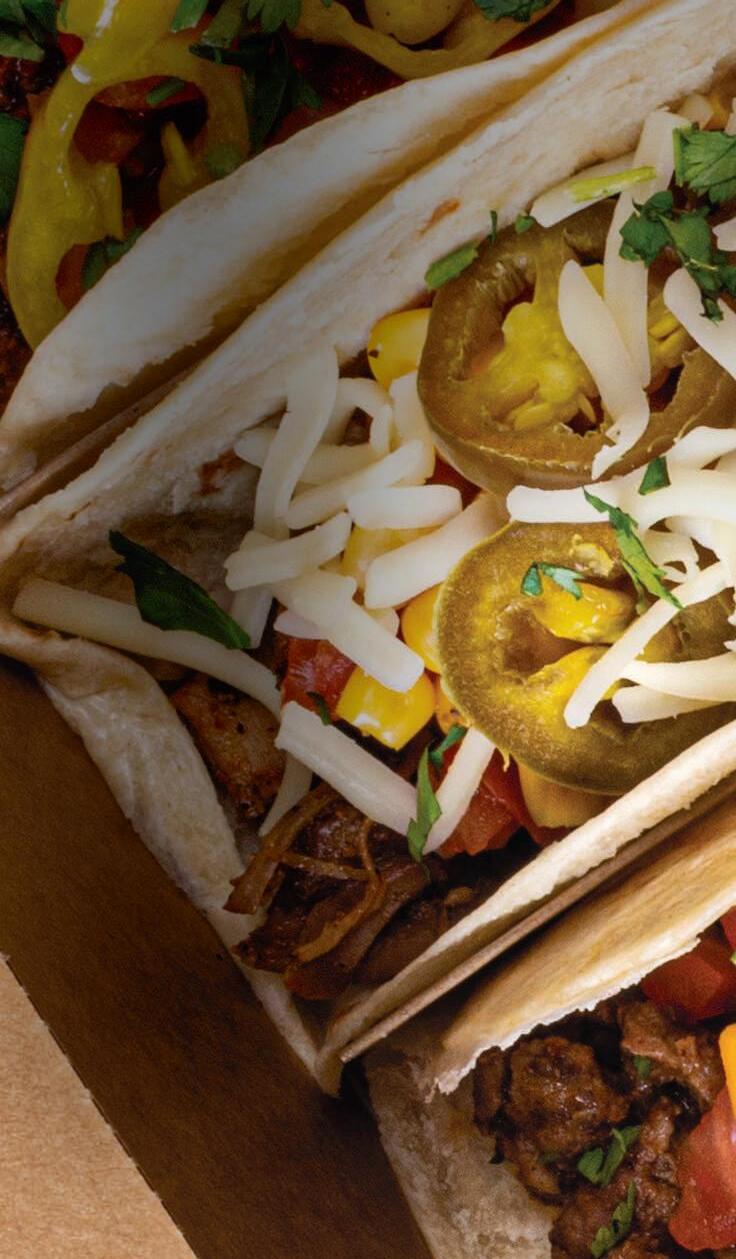











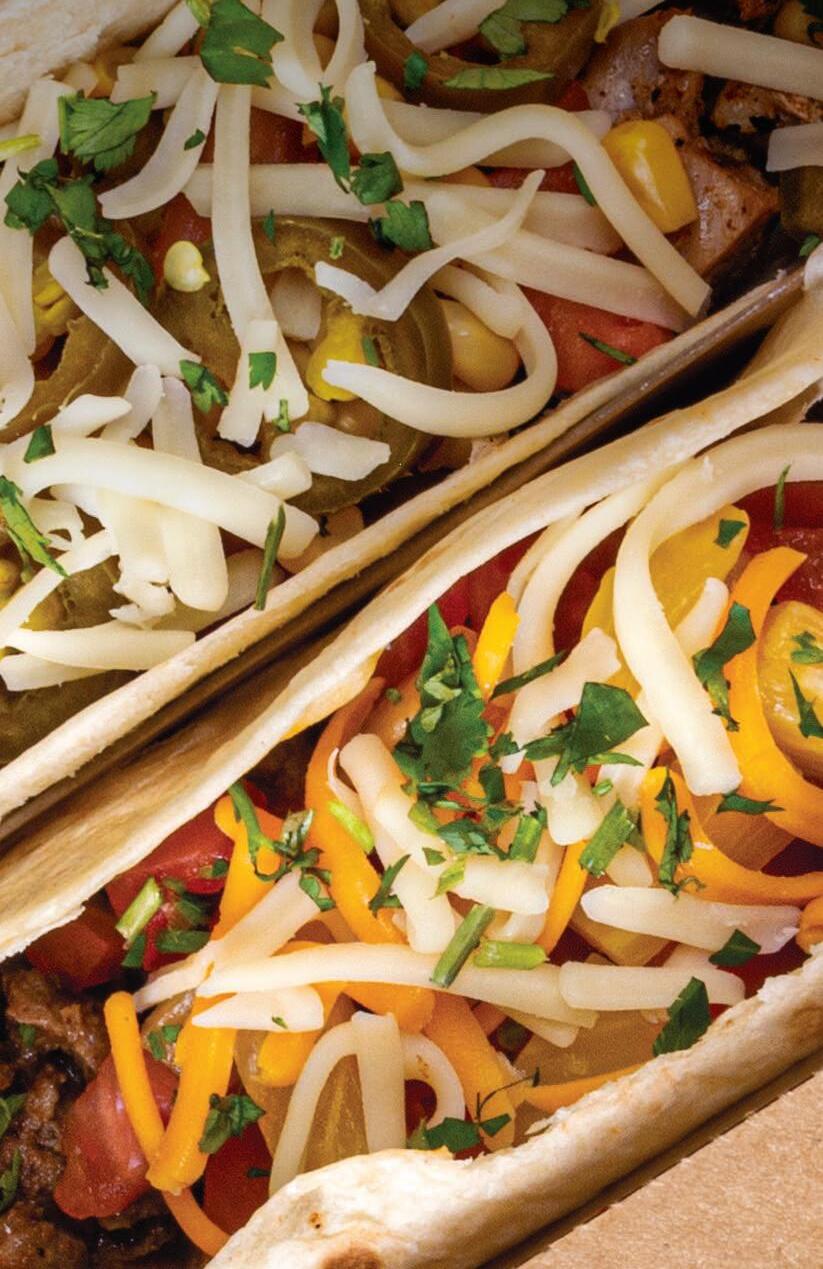



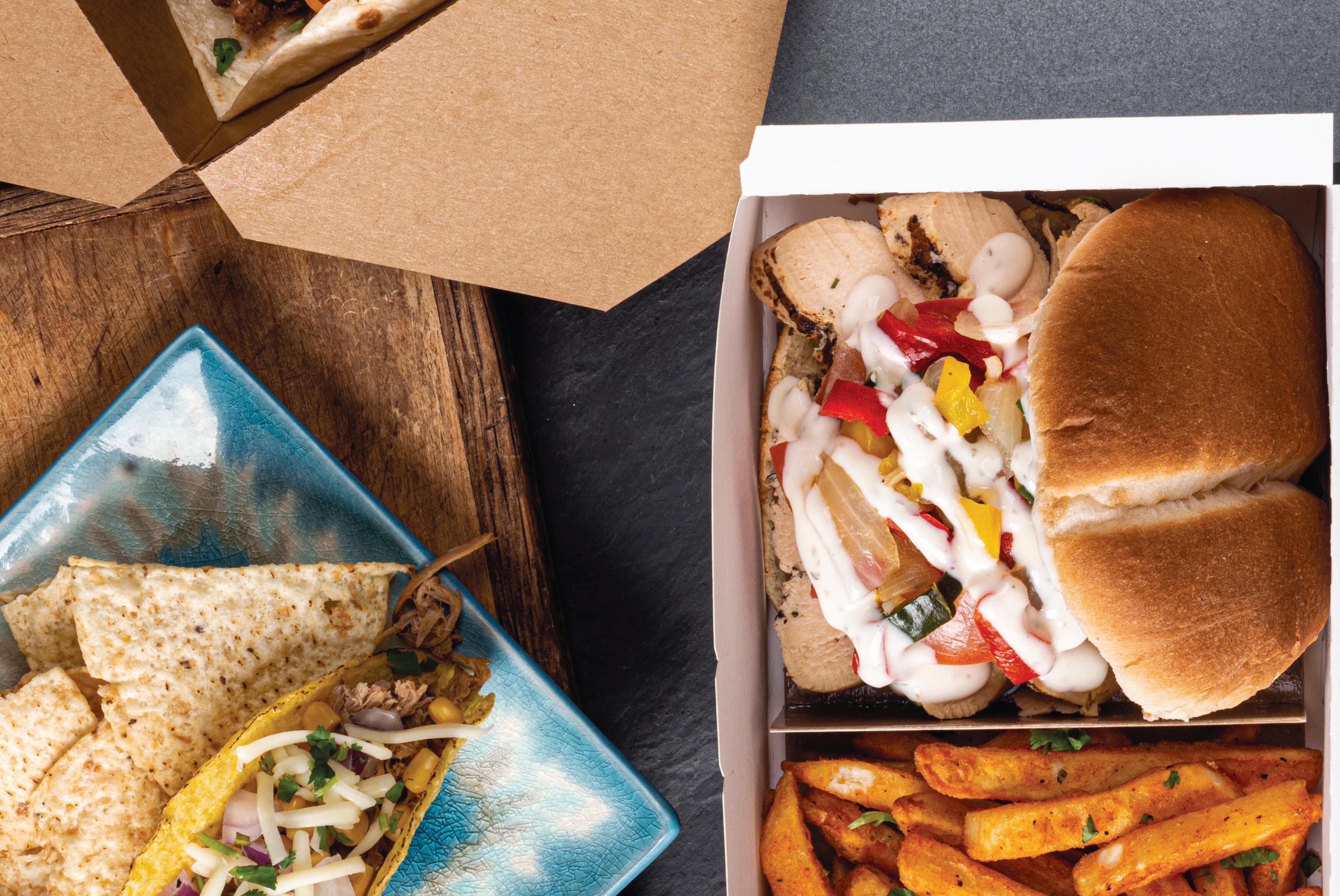
molded fiber solutions because the form and function were very similar,” says Nathan Schultz, director of sustainability at Inno-Pak “It’s almost been like forced experimentation based on necessity.”
At the same time, innovation in the packaging industry itself has seen a slower pace. “The reason why we do not see any real innovations in the quick-ser-

The world of foodservice packaging is transforming in the wake of the COVID-19 pandemic. Supply chain issues, increased demand for off-premise dining, and sky-high customer expectations have forced restaurant operators to find creative ways to meet their packaging needs.




On the supply side, challenges mirror what the restaurant industry is facing in other areas. “Operators are struggling with the higher cost of packaging across the entire product spectrum,” says Nathan Foxx, director of category management at
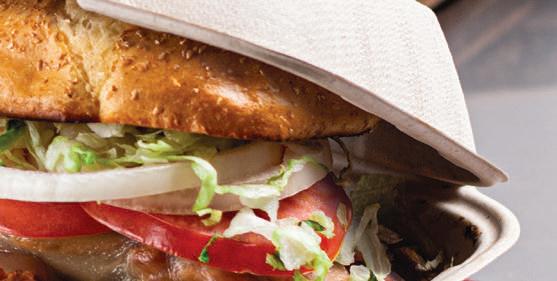


R3 Redistribution . “Once they decide on the perfect packaging, consistent inventory invariably becomes a problem. Customerfacing packaging costs and inventory availability have been skyrocketing issues since the onset of COVID.”
To help solve these issues, restaurants are expanding their supplier base and looking for similar packaging available from multiple sources. They may choose to spot-buy or shift into packaging types of substrates they have never used. “When polypropylene clamshells and containers were hard to find, some people tried






vice restaurant packaging arena has to do with the current quick-service restaurant packaging converters’ mindset and lack of capabilities to innovate,” says Akiva Buchberg, inventor and executive chair of GreenDustries Corporation . “The industry has been dominated by commodities-type packaging concepts for many years. Restaurant operators cannot demand innovations, or to ‘think out of the box,’ from packaging converters that for decades have produced and supplied them only with the same old packaging concepts: flat-wraps, clamshells, scoops, boxes, and bags. Restaurant operators cannot demand or expect packaging innovation from those that are unable to create them.”
Some notable exceptions are the introduction of better insulative properties and more sustainable materials to the market. “Whether it is a new bioresin or coating, there are more and more innovative options out there which can help with sustainability goals,” Schultz says. “Consumers want to feel good about the
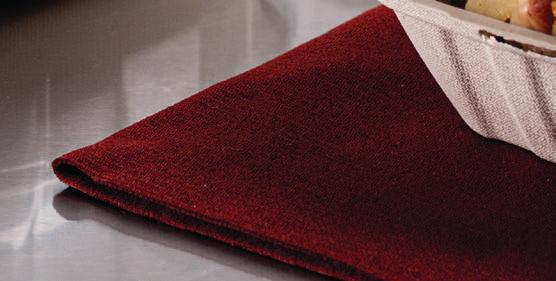
Operators are adjusting to new pressures in packaging supply and demand.
“It’s almost been like forced experimentation based on necessity.”
The INNOBOX EDGE was designed to improve the dining experience. The reverse lock keeps food secure while the tear-away flaps streamline the dining experience. The inside corners and inner poly lining prevent leaks.

Learn More at www.innopak.com





brands they frequent, and that includes feeling good about the packaging and the effect it has on the environment.”
It’s clear that customers are demanding higher-quality foodservice packaging across the board. With the recent surge in off-premises dining, many consumers have found themselves relying on packaging more frequently.
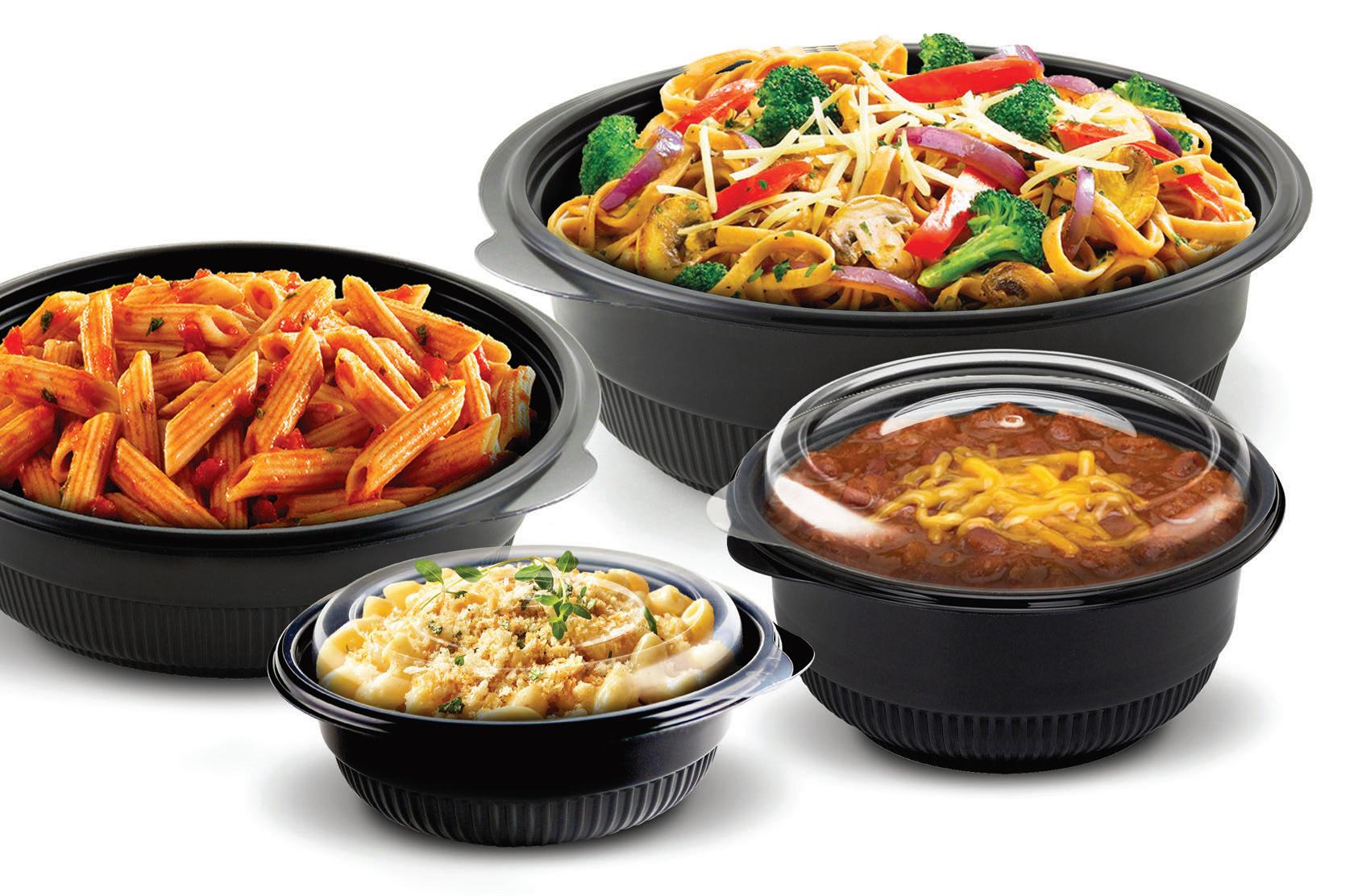
“The good news here is that during the COVID-19 pandemic, off-premise dining, which has grown to include drive thru, take out, contactless pick-up, and delivery, became a lifeline for many operators,” says Alec Frisch, vice president and general manager of GP PRO’s Foodservice category. “And while this trend is now stabilizing, off-premise dining still accounts for a significant portion of operator revenue.”
According to Datassential, nearly 40 percent of consumers now get food delivery at least weekly. While these consumers may have been willing to overlook certain shortfalls in the early days of the pandemic, they’re no longer willing to do so.
“As operators scrambled to take advantage of consumer interest in and demand for off-premise dining options, they were largely left to their own devices to figure out how to develop and scale viable packaging solutions,” Frisch says. “From my personal experience, it seems there was a lot of Styrofoam and masking tape involved. And despite this resulting in soggy fries, lukewarm soup, and spilled soda, consumers, myself included, were only too eager to partake—for a while, anyway.”
Times have changed, however, and consumers are becoming less forgiving. They now expect their off-premise orders to arrive in the same condition they would ordinarily see in the dining room—so it’s critical that food travels well, no matter where the consumer decides to eat. In fact, recent research from GP PRO found that 48 percent of consumers expect more from their delivered meal experience now than they did a year ago.
Packaging plays a crucial role in ensuring a great customer experience off-premises, and restaurant operators that were already experimenting with takeout and delivery packaging before the pandemic gained an advantage. “Through side-byside testing, these operators identified which containers delivered the best expe-
rience for their food,” says Kurt Richars, director of market development and sustainability at Anchor Packaging . “When takeout and delivery demand accelerated, they were best-positioned to adjust and exceed consumers’ expectations.”
Operators need to be able to ensure consistency. Food cannot migrate compartments or change temperature during transport. “Over the past two years, people have ordered a lot of takeout and delivery meals,” Richars says. “They know food can arrive without compromising meal quality. Consequently, operators whose packaging maintains dine-in quality will enjoy more repeat business and increased off-premise sales.”
The recent explosion in popularity of third-party delivery services like DoorDash and Uber Eats means that foodservice packaging must survive an additional round of handling before it arrives to the customer. It has to be strong as well as intuitive and easy to carry. “The consumer and the third-party delivery service both want to have a quick and easy pick-up process, with the packaging being durable enough that they don’t have to worry about the packaging breaking while bringing it to and from locations,” says Mark Schlossman, executive vice president of sales and marketing at Accurate Box Company
Customer expectations also extend past first impressions into the ability to preserve leftovers. “Off-premises ordering is now a way of life,” says Monica Bowser, corporate marketing manager at Genpak . “Consumers also expect to be able to eat out of containers, store them in the refrigerator, and reheat them in the microwave. Operators should consider packaging that maintains meal integrity, is reheatable, reusable, and recyclable.”
The bottom line is that customers want packaging to be convenient, safe, and easy to use. Regardless of the ordering scenario, the packaging must perform equally well. “Daily consumers are moving toward using drive-thru and takeout options more frequently,” says C.J. Baker, outside customer success at Policarta. “This means that packaging must fulfill the way they choose to order.” SC
“Off-premises ordering is now a way of life.”
Cross-flow ventilation protects taste by maintaining temperature and texture for up to 30 minutes.


Durable, stackable, single and multi-compartment designs mean meals arrive looking great.
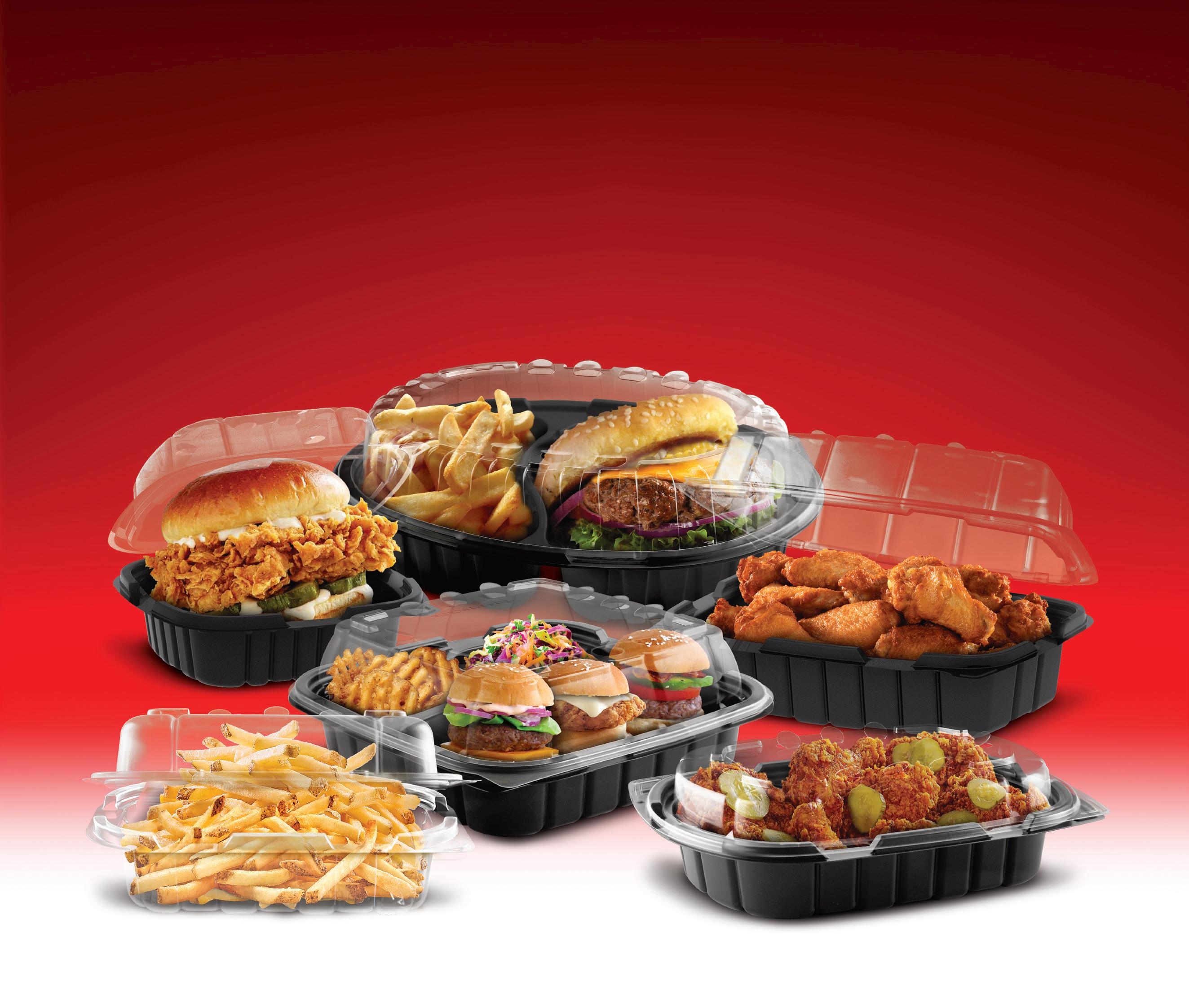


Clear, anti-fog lids help the kitchen avoid order errors without opening the packages and releasing heat.
Patented design maintains meal quality while offering reuse and recyclability in microwavable, dishwasher-safe material.

Takeout and delivery have grown their share of many restaurants’ revenue streams, and consequently, food packaging options are becoming more critical to maintaining a strong brand. Customers expect dine-in quality regardless of where they choose to eat their meals—and, due to the rise of third-party delivery services, the packaging that holds a meal may even be the guest’s first direct impression of a restaurant brand.


“As consumers have gotten more used to off-premises dining, the importance of packaging has increased,” says Monica Bowser, corporate marketing manager at Genpak “Packaging can play an important role in takeout and delivery satisfaction. The right packaging can protect the integrity and temperature of food, so it is important for operators to be mindful of how to best serve the food even after it leaves the restaurant.”
While packaging is often viewed as a bottom-line expense—not much more than a vessel for food and drink—it can speak volumes, and it can have serious implications for a brand. “I would encourage operators to consider the power of packaging to represent the brand and delight consumers and to see it as an investment that can help deliver an enviable ROI,” says Alec Frisch, vice president and general manager of GP PRO’s Foodservice category. “And that ROI isn’t just wishful thinking. Our research found that 67 percent of consumers are willing to pay between 5 percent and 15 percent more for a better delivered meal experience.”
Of course, the cost of packaging is a primary concern, but if packaging spills food, breaks, or disintegrates during transit, the customer experience will suffer.
Functionality cannot be overlooked.
“The overall experience is not just with the food but with the form and function of the packaging,” says Nathan Schultz, director of sustainability at Inno-Pak . “Was
it easy to open? Was it easy to use or eat out o? Did the packaging keep everything together or protect food transfer? Ultimately, it comes down to picking the right packaging for your restaurant’s specific offerings.”

Restaurant operators looking to improve their packaging can start by taking a closer look at how each SKU is used. “Analyze what products are used for each scenario,” says Bradley Saveth, SupplyCaddy president and CMO, and C.J. Baker, outside customer success at Policarta. “Are there SKUs that can be eliminated? Success in packaging programs is eliminating challenges for your employees and giving your customers ease of use. And remember to experiment. Don’t be afraid to explore options just because something works for now.”
When spot-checking existing solutions or evaluating new ones, running tests in the real world can help determine how well each type of packaging holds up to
“Don’t be afraid to explore options just because something works for now.”Genpak




a restaurant’s unique needs. “The most impactful action you can take is to test packaging in conditions that match what your customers experience,” says Kurt Richars, director of market development and sustainability at Anchor Packaging “Package your food, get in your car, and drive it around for 20 minutes with the windows down or the air conditioning on. This will quickly identify what packaging will best protect your food taste and presentation—and consequently, your brand.” Today, more consumers are experiencing restaurants first via takeout or delivery, so it makes sense to ensure the packaging will hold food the way it was intended.
“Never settle for products that do not perform to your standards,” says Nathan Foxx, director of category management at R3 Redistribution . “Cost can never be the single driving force for the packaging that you put your products in. Anything that decreases your reputation instantly has
negative impacts on customer retention and cash flow.”


In a recent GP PRO survey, 30 percent of consumers said their delivered meal experience was “not as good” as dinein. Packaging impacts both preservation and presentation, so it’s likely that packaging is the culprit. Preserving the food— its temperature, texture, quality, integrity, and safety—is critical, of course. When it comes to presentation, the appearance of the food in the packaging certainly has an impact, but branding is also part of the equation. “Packaging is a blank slate that

a brand can and should capitalize on with a logo, a branded message, or a discount on a future purchase,” Frisch says.
Branding on the packaging—right down to the print quality of the graphics—can be memorable, for better or for worse. “The first thing consumers notice about packaging is the graphics,” says Mark Schlossman, executive vice president of sales and marketing at Accurate Box Company. “In this day and age of posting pictures and videos on social media, consumers are almost as interested in their experience as they are in the overall taste of the food. We have seen some great successes with consumers promoting their favorite food or restaurant simply by sharing photos and videos online.” In these scenarios, the branding on the takeout or catering packaging can help put a restaurant on the map.
Printing technology has advanced in recent years, and operators can drive engagement and increase loyalty by rotating designs without creating any additional cost. “The graphics can change along with every holiday, special occasion, or the launch of a new menu item to drive sales,” Schlossman says. “Even franchises in different locations across North America can each have their own graphics on their packaging to support their local sports team or university. The possibilities are endless.”
Packaging options that met guest expectations in the past may no longer do so. “Quick-service restaurant customers’ profiles have changed and are driven by millennials, Gen X, and Gen Z,” says Akiva Buchberg, inventor and executive chair of GreenDustries Corporation . “As those customers become accustomed to innovations, they expect to see and experience real packaging innovations—a package that is sustainable, portable, functional, a package that provides better heat retention as well as an easy and clean way of eating and a package that they can relate to, a ‘cool’ package.”

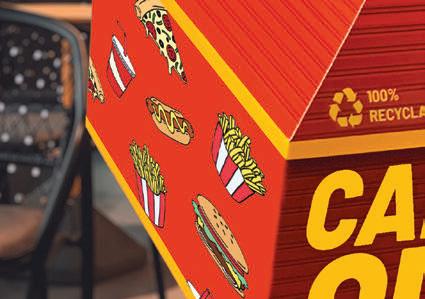
In today’s rapidly changing environment, operators should consider packaging a critical piece of the operational puzzle when it comes to ensuring a great customer experience. SC
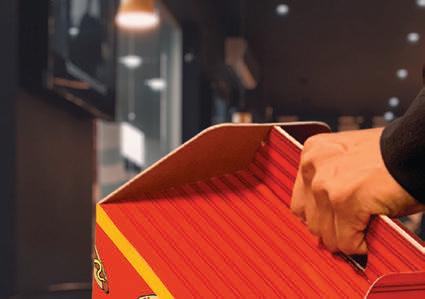
“Packaging is a blank slate that a brand can and should capitalize on.”
100% recyclable branded take-out packaging for easy mobile pickup, catering, and drive-thru orders.



It’s clear that consumers want businesses—including restaurants—to be more environmentally conscious across the board. Recent research from Simon-Kucher & Partners found that younger consumers are shifting their behavior toward choosing sustainable alternatives. And according to a 2022 survey from Deliverect, 43 percent of consumers are willing to pay more for takeout and delivery from restaurants with visible sustainability practices.
Many restaurants are choosing to make their sustainability commitments visible through their food packaging choices. Paper, for example, sends a clear message. “It makes a lasting impression on consumers when they receive takeout orders in paper packaging instead of plastic, styrofoam, or aluminum packaging that will do harm to the environ-


ment,” says Mark Schlossman, executive vice president of sales and marketing at Accurate Box Company.
Recyclable packaging has the same impact in guests’ eyes. “Consumers want to act sustainably and expect operators to enable that through more sustainable offerings,” says Kurt Richars, director of market development and sustainability at Anchor Packaging . “They appreciate packaging they can easily reuse or recycle.”
Sustainable packaging represents an opportunity for restaurant operators to get ahead of the curve. In many areas, if they don’t adapt now, they may be forced to do so later. “If you are not into sustainable packaging right now, consider choosing a sustainable option as you revamp your program,” says Nathan Schultz, director of sustainability at Inno-Pak “It is not only good for the environment, but it is also a great story to tell your customer base. It is also a good idea to go sustainable with all the legislative pressure we are seeing.”
Sustainable, reusable, and recyclable packaging ranked first on the National Restaurant Association’s list of top 10 food and menu trends this year. Deliverect found that a majority (56 percent) of consumers prefer ordering from restaurants with eco-friendly packaging. Packaging is also drawing more government attention these days—state and federal legislatures are starting to introduce bills that limit or ban non-sustainable packaging like styrofoam and single-use plastics.
Current attention is focused on reducing and eliminating the use of perfluoroalkyl and polyfluoroalkyl substances (pfas), also called “forever chemicals” because they are known to remain in the environment—and human bodies—indefinitely. In the U.S., 203 PFAS-related bills in 31 states have been introduced. Maine and Washington have already enacted laws that allow state agencies to ban PFAS in
Consumers—and governments—are increasingly interested in sustainable foodservice packaging.
“Consumers appreciate packaging they can easily reuse or recycle.”GreenDustries Corporation
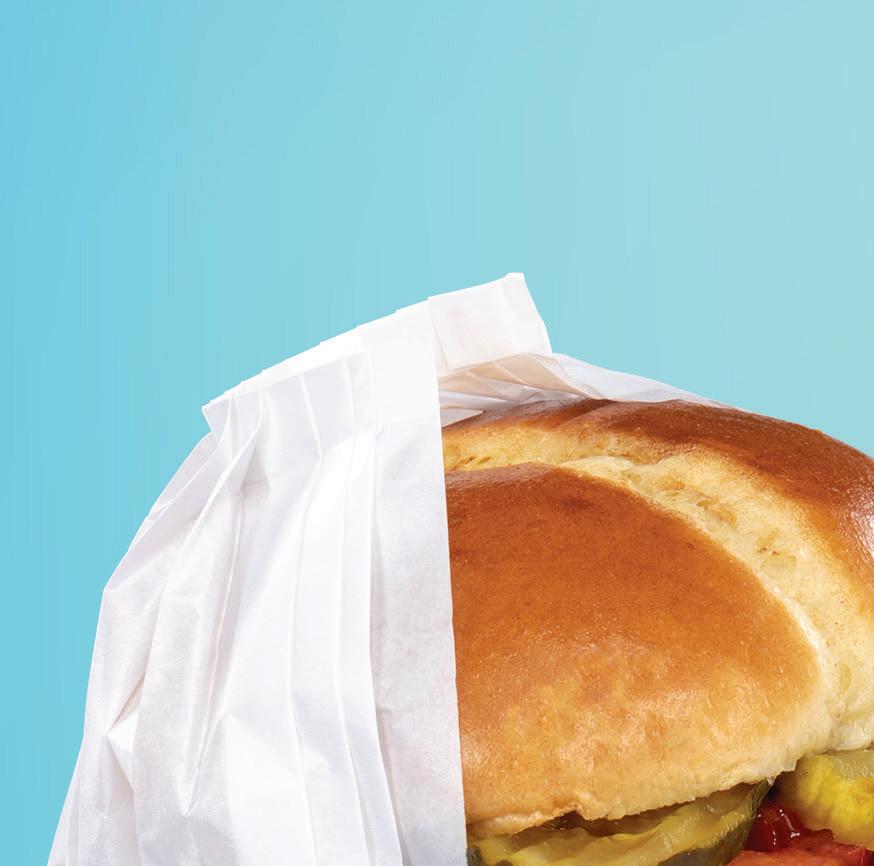


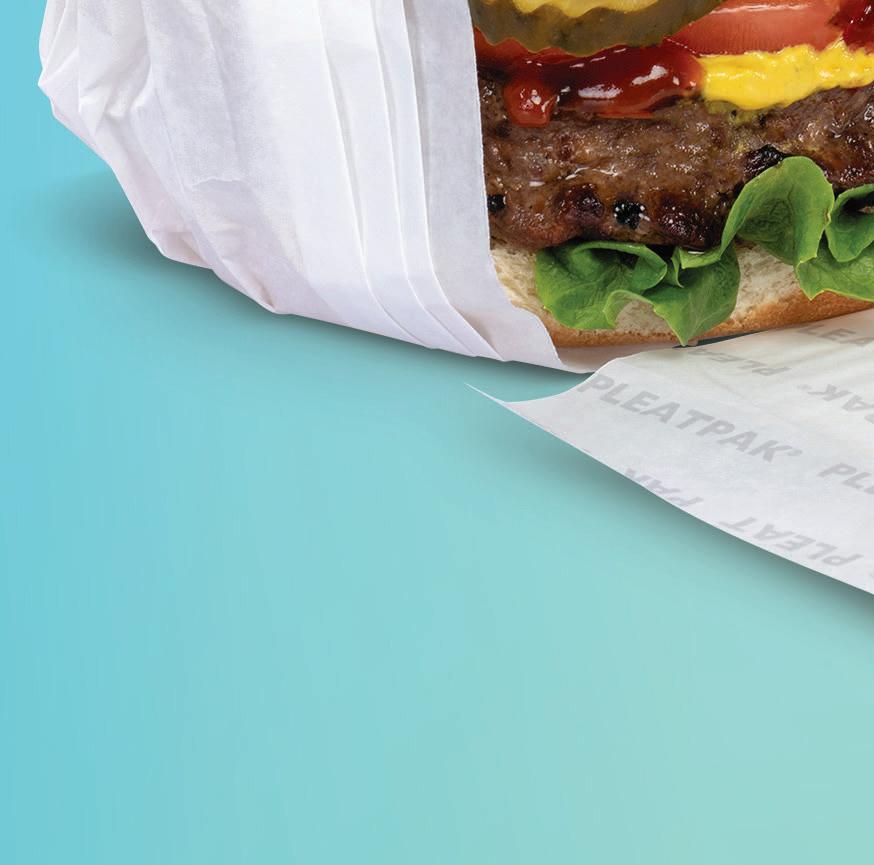
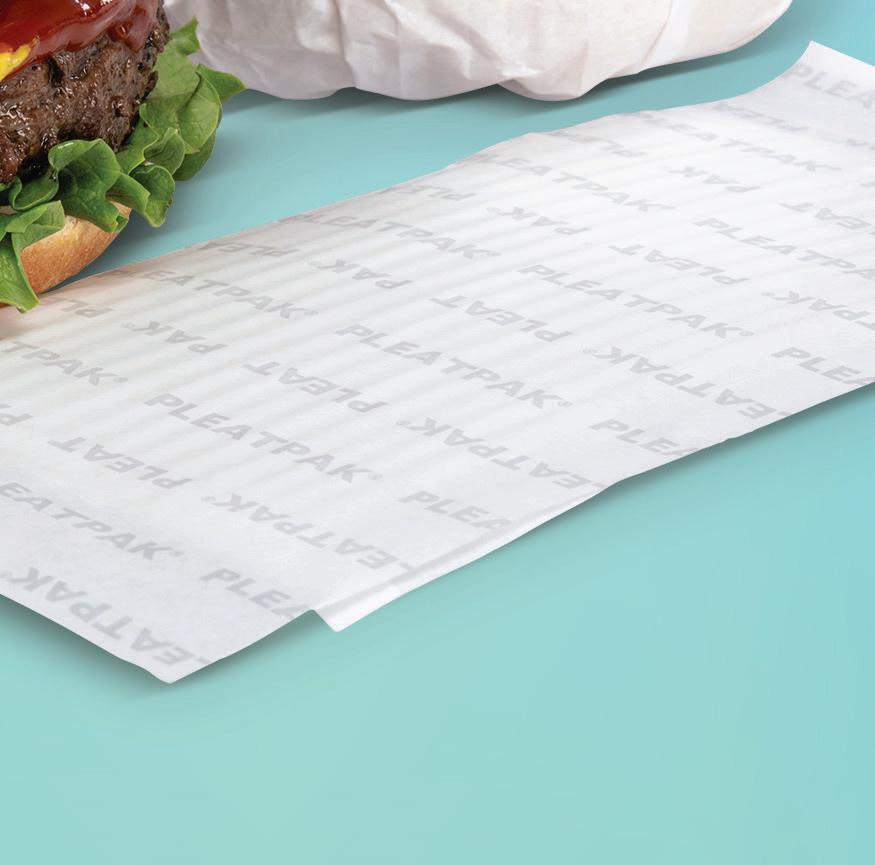






many products. And this summer, the U.S. Senate Committee on Health Education Labor and Pensions passed the bipartisan Keep Food Containers Safe From PFAS Act. The intent is to ban the use of PFAS in food packaging.
This indicates that sustainable packaging will stay a priority for the foreseeable future. “Foodservice packaging is on the precipice of major change thanks to consumer demand and increasing pressure for sustainability,” says William Chandler, outside customer success at Policarta . “Foodservice companies should anticipate these changes and begin investing in and investigating alternatives to current packaging standards.”

Advancements in technology have introduced a wide variety of sustainable packaging materials that are also durable. These include paper-based products made with recycled fiber and polypropylene (pp) and polyethylene terephthalate (pet) packaging designed to be recycled or reused.
“Over the years, massive increases in packaging made from sustainable materials have arisen, aligning with consumer preferences for containers with ecofriendly life cycles,” says Monica Bowser, corporate marketing manager at Genpak “Whether compostable, reusable, or recyclable, the advancements in the sustain-
able composition of packaging align with upcoming generations that place heavy value on sustainability.”
Notably, packaging designs themselves have not changed—due in part to the requirements of the converters that produce them and their modus operandi. “We see more operators trying sustainable packaging, but conceptually and structurally, those are the same old packaging only made with ‘greener’ materials,” says Akiva Buchberg, inventor and executive chair of GreenDustries Corporation . “But we don’t see any structural improvements of the current commodity-style packaging.”
Beyond innovation in materials, the recycling process is also evolving to accommodate materials that were once relegated to landfills. Two years ago, for example, Georgia-Pacific recycled paper mills in Green Bay, Wisconsin, and Muskogee, Oklahoma began accepting mixed paper bales that contain single-use polyethylene (pe)-coated paper cups. PE
coatings were once considered non-recyclable, but repulping trials showed these mills are able to recapture fiber from paper cups while screening out PE coatings. The fiber is reused to make toilet tissue, napkins, and paper towels.
“As technology advancements support our ability to source materials and create products, they also have a play in infrastructure for packaging’s end of life,” says Alec Frisch, vice president and general manager of GP PRO’s Foodservice category. “We are looking forward to the time when the infrastructure to support the back end is more complete and more broadly accessible.”
Services and facilities vary by city and region, and depending on a restaurant’s location, different types of packaging materials may still be more or less sustainable than others. If a local brand uses packaging that can’t be recycled or composted in its area, it risks accusations of “greenwashing” or misleading its customers about its positive environmental impact. “While most operators mention compostability and recyclability when defining sustainable packaging, many operators also note that what counts as sustainable in one place may not in another depending on the local infrastructure,” says Nathan Foxx, director of category management at R3 Redistribution “If an operator is in an area without a local recycling or composting program, they may not consider recyclable or compostable packaging a very sustainable choice.”
Also, while consumers clearly want sustainable packaging, they still aren’t widely familiar with the details. “There is a strong opportunity for sustainable packaging in foodservice due to strong interest at all levels,” Foxx says. “But there are issues of sub-par understanding and awareness that have to be overcome.” To get consumers to see their deeper commitment, brands may need to educate.
“Sustainability might feel like the newest buzzword or fad, but it’s really here to stay,” says Nathan Kraatz, marketing specialist at Inno-Pak. “As millennials step into their purchasing power, and Gen Z behind them, your brand’s sustainability is going to open—or shut—doors for you.” SC
“ Your brand’s sustainability is going to open—or shut— doors for you.”GreenDustries Corporation

QSR ’s webinar series tackles hot topics in foodservice— and best of all, you can learn from the comfort of your own o ce. Take a deep dive into our collection today!


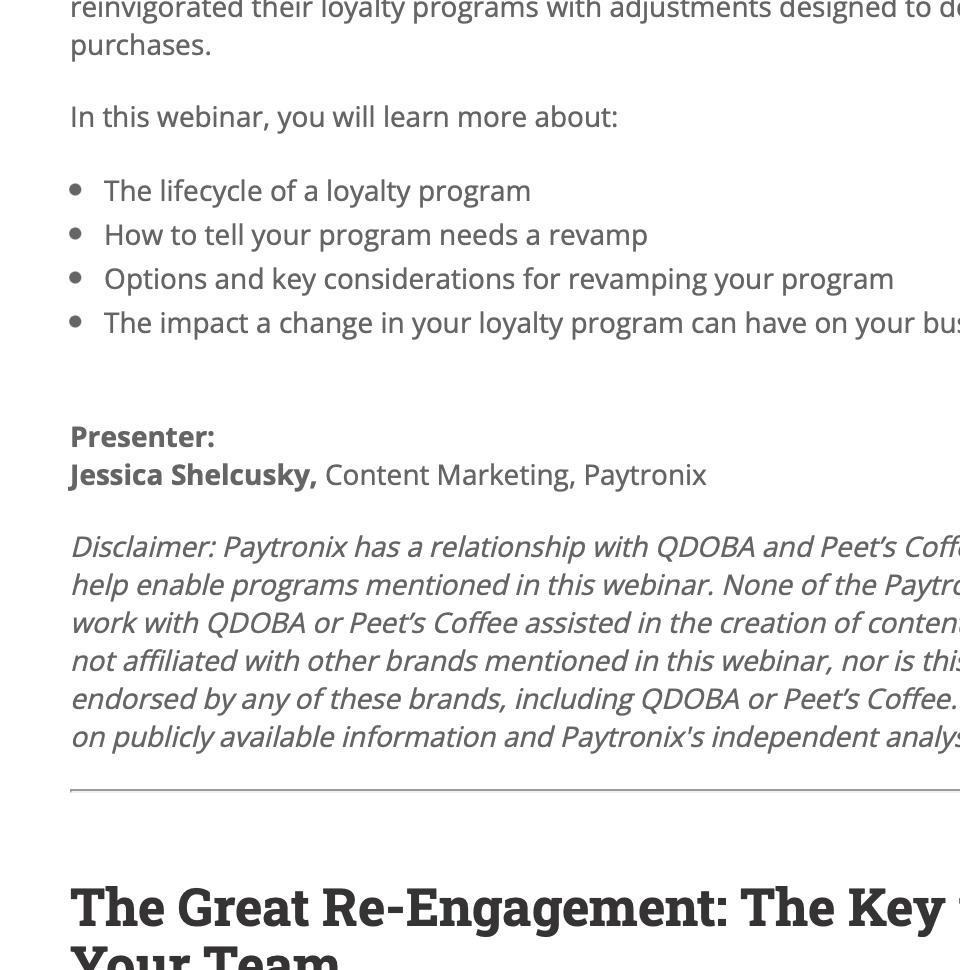



(Did we mention they’re free?)


86th Fifth Ave.
Paterson, NJ 07524
973-345-2000
accuratebox.com
Accurate Box Company is one of the largest family-owned manufacturers of custom high-graphic corrugated packaging in the United States. We are experts in creating packaging for quick-service restaurants. In business since 1944 and womenowned since 1998, Accurate Box manufactures in New Jersey and ships competitively throughout all of North America.




13515 Barrett Parkway #100 St. Louis, MO 63021
800-467-3900
anchorpac.com



Anchor Packaging is one of North America’s largest thermoformers, best-known for its award-winning product designs and custom package capabilities. Anchor products include the award-winning Crisp Food Technologies® line, Safe Pinch® tamper-evident containers, MicroRaves®, IncrediBowls®, and Culinary series, offering foodservice a unique stock line of over 450 packages and cling films.
10601 Westlake Drive
Charlotte, NC 28273
800-626-6695
genpak.com

Genpak is a leading manufacturer and innovator of foodservice packaging. The company serves a multitude of clients across North America, ranging from retail businesses to major fast-casual restaurants. Genpak’s dedication to innovation, versatile packaging solutions, and commitment to excellent customer service efficiently serve the ever-evolving demands of the foodservice industry.
133 Peachtree St. NE
Atlanta, GA 30303
404-585-4500
gppro.com







GP PRO makes products used in commercial and industrial restrooms, break rooms, and foodservice settings. You’ve probably seen and used our products in office buildings, restaurants, stadiums, and airports across the country. And you may recognize some of our well-known brands, including ActiveAire® , Angel Soft® Professional Series, Brawny ® , Compact®, Dixie®, enMotion®, and Pacific Blue™.


American Pleating Technologies
511 Camson Road
Anderson, SC 29621
347-699-2468
pleatpak.com





PleatPak® by GreenDustries® is disrupting the industry with its unique and innovative pleated design. Using proprietary technology, GreenDustries designed and commercialized the first-ever structural innovation in packaging. Superior to all other QSR burger and sandwich packaging in every measurable category, customers all over the world love PleatPak.
1932 Pittsburgh Drive
Delaware, OH 43015
800-466-6725
innopak.com
At Inno-Pak, innovation is more than a buzzword—it’s what we do. Since 1992, we’ve been using state-of-the-art technology to provide innovative packaging solutions and the best customer experience to restaurants and other foodservice providers, grocery stores, convenience stores, and distributors.

















































14 Walter Court Lake in the Hills, IL 60156 800-334-9372
afcmaterials.com


Policarta is a sixth-generation paper converter and packaging innovator. Acquired by AFC Renewables in 2020, specializing in sustainable paper packaging, our ChefPack® and Oven2Go® were designed for rapid cook environments. Policarta has partnered with SupplyCaddy as a manufacturer’s representative. SupplyCaddy has successfully delivered over 100,000,000 products.
2301 Lunt Ave. Elk Grove Village, IL 60007 866-987-7373 r3redistribution.com

Wherever there is a food preparation operation— be it a hospital, school, restaurant, hotel, kiosk, or even meals on wheels—there’s a need for topquality, yet affordable, supplies and equipment. Reliable Redistribution Resource (R3) has the products, knowledge, and expertise to make sure you have the right item for your customer needs.


Dispatch Goods CEO and cofounder— and surfer—Lindsey Hoell was inspired to begin her reusable packaging company by a grim scene she encountered while living in Hawaii.
“We were in Kauai hiking to a pretty remote surf break, and when we got to the beach it looked like the sand was rainbow,” she says. “When I got closer, I realized it was microplastics. It was a really devastating moment. I realized we really needed to turn the faucet off in terms of creating plastics and pumping them out to consumers, because they are making their way back to our shorelines.”
Following this experience, Hoell, a former cardiovascular perfusionist, dove into the world of reusable packaging. After earning her MBA at the University of California Berkeley, she joined forces with Maia Tekle to found Dispatch Goods in 2019. The idea at the core of Dispatch Goods is to offer restaurants and other businesses a platform that they can easily plug into to swap their single-use products with sustainable, reusable alternatives.
Dispatch’s mostly steel and glass products are not merely additions to a brand’s packaging lineups, but replacements, and Hoell and Tekle are in the process of building a nationwide network for the implementation of reusables. Their goal is not to make the existing packaging industry more sustainable, but to disrupt it entirely.
“We want to create a world where dispatchable means something similar to recyclable,” Hoell says. “We have ambitions to completely change the way that we’re doing business around packaging.”
The Dispatch operation centers on proprietary sanitation facilities that do the work of sterilizing reusables for partnering companies. Each Dispatch item has a QR code that consumers can scan to locate local Dispatch drop-off points, or guests can return their reusables to the restaurant where they dined, as restaurant partners have designated days for Dispatch to pick up items and process them for re-use. A “packaging agnostic” company, the Dispatch system can seamlessly accommodate items from restaurant partners who already have their own reusables in place. The company simply attaches QR codes to the restaurant’s existing items, and integrates these items into their pick-up system. The company is bi-coastal, working with grocery chains and other companies that
rely on packaging in the San Francisco Bay market as well as a set of East Coast markets between New York City and Washington D.C. As of now, its restaurant partners are limited to the San Francisco Bay area—Dispatch currently works with more than 60 restaurants in this market—but, since the infrastructure is already in place for non-foodservice partners on the East Coast, expansion to restaurants in these markets is on the docket for the near future. When a restaurant expresses interest in becoming a Dispatch Goods partner, the Dispatch team evaluates its current packaging offerings, and then locates a suite of replacements from the Dispatch lineup. Once specific item needs and quantities are determined, the restaurant can schedule auto-delivery and pickup from Dispatch, taking out any legwork surrounding packaging on the part of the foodservice brand. “From a business perspective, the process really is meant to be the same as switching vendors of single use products,” Hoell says. While certain legacy partners maintain both single-use and Dispatch’s reusable options, the company now only partners with brands willing to make the switch entirely to reusables—a process that Hoell says is often simpler than attempt-
ing to maintain various packaging options, both in regards to ordering materials and to serving guests in fast-paced environments, such as fast-casual concepts, where deciding between packaging options can cost employees valuable time. Switching to a domestic reusables supplier also avoids supply chain disruptions, a hurdle for operators surrounding not only ingredients, but also single-use packaging. Furthermore, for brands already supplying costlier compostable (or otherwise more sustainable) single-use products for guests, switching to Dispatch can, at times, save on packaging costs, or at least present a circular option for the price operators are already spending on eco-conscious, disposable items. Plus, presenting customers with a reusable option has the potential to raise revenues on its own.
While a majority of Dispatch’s initial partners were full-service concepts, the brand is working towards a focus on quickserve and fast-casual operators with new packaging that the company plans to introduce in Q4 of this year. This product is made of lightweight polypropylene that is specially tailored to fast-casual environments in its ability to nest and quickly separate from a stack. The Dispatch goods model seems snag-free, aside from the unpredictability of customers; what happens when a diner does not return the reusable product? This is a loss for which Dispatch prepares. Rather than take a deposit from guests at the point-of-sale to ensure they return items—a strategy that might add friction to Dispatch’s rather simple system—the company uses past data from restaurant partners to estimate how many containers will go missing and builds that into an anticipated loss rate that informs the company’s product pricing structure. The brand is also working to make the production of its items more cost-efficient to offset any material loss. However, all in all, Dispatch Goods presents a win for the environment, even when customers swipe a container. When a consumer takes a reusable home, they’re integrating that product into their own kitchen. And the gap of missing containers is overwhelmed by the amount of single-use product Dispatch has already saved from entering waste streams; in 2020 alone, the brand replaced over a million dis-

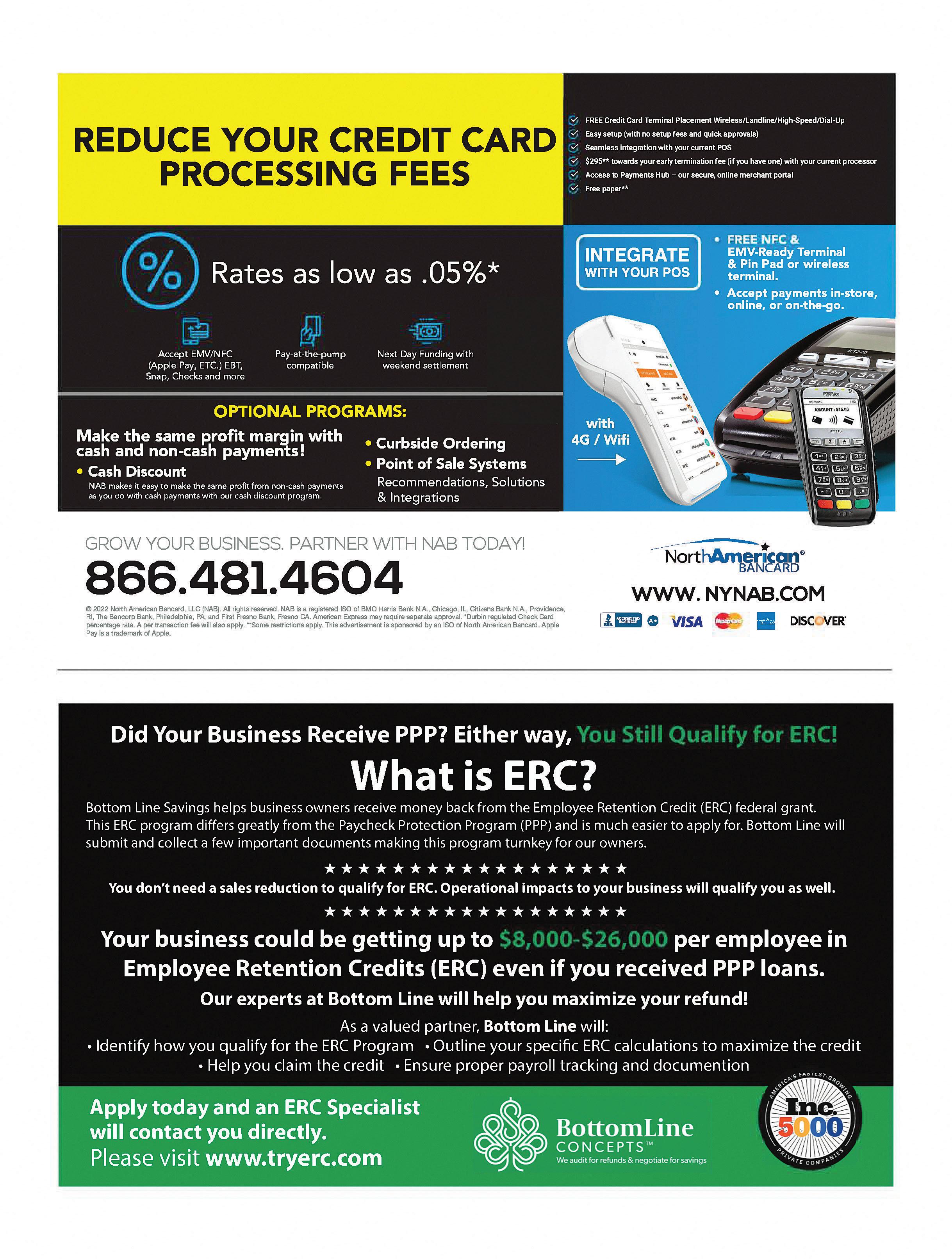
while the biggest in company history, is still 14 years in the making.
When the chain opened two units in 2008, the family saw how difficult it was to duplicate scratch baking. So instead of having four production facilities and eight locations, the group worked on placing all production into one venue. They purchased a distressed property at a good price during the economic downturn and built it up over the years. Now, Vicky Bakery is in the process of purchasing another 16,000-square-foot facility to support further growth. Technically speaking, Santiago’s niece became the first franchisee in the latter half of 2021. The brand sold its first store to the public at the start of this year. The sweet spot for Vicky Bakery is 2,500 square feet, but it’s dipped to as low as 1,700 square feet and bumped to as high as 3,000-,3,500 square feet. The chain prefers neighborhood positioning that’s easily accessible for morning, afternoon, and evening dayparts. Before the chain fully rolled out its franchising program, it made sure to create a store flow that allowed for as many tickets as possible per hour. Vicky Bakery averages between $15–$30 in ticket size and 5 to 7 minutes in throughput time. Santiago says the company comes from a tradition of quick pickup; there’s tables in bakeries now, but that’s a relatively new feature.
Vicky Bakery has a presence on the campus of Florida International University and the University of Miami. The company is working to open a unit at St. Thomas University, as well. The CEO says the footprint not only introduces Vicky Bakery to younger customers, but it also attracts transplants from all over the country.
In addition to franchises, the family will continue to open locations because the passion still remains. When describing Vicky’s legacy, Santiago remembers from 2008 when a woman walked in, practically fell to her knees, and began crying. He and his wife expressed concern, and the woman eventually told them her mother passed away a few years earlier and that she had just lost her dad. The wave of smells and the look of the store reminded her of childhood.
That’s how hard the nostalgia hits. Vicky Bakery only wants to create more of those cherished memories. q

franchised, in 19 states. In 2022, as of press time, it had already added eight stores with five more openings on tap for the remainder of the calendar. Its overall revenue spiked to $37.9 million in 2021 from $31.7 million in 2020.


Vitality Bowls was launched in 2011 in San Ramon, California, by Roy and Tara Gilad, inspired by trying to find nutritious meals for their daughter who suffered from food allergies. Tara says its competitive edge is it doesn’t add sugar, frozen yogurt, sorbet, or any unhealthy fillers to smoothies and acai bowls.
Tara, who is COO, says franchising is going well because, “being in the wellness category helps protect us from recession. We’re a more affluent ticket and people because of COVID are more focused on their health.” The fast casual’s ideal franchisee, Gilad says, is “a passionate, driven entrepreneur who is mentally strong and can build a positive culture in each location.” Then, “we help them figure out financially how they can open one or multiple locations.”
The husband-and-wife team of Pam Vivio and Mijo Alanis started Beyond Juicery + Eatery in 2005, which has grown to 38 locations with 36 franchised and two company-owned. And it’s been expanding at a healthy clip, too, adding 14 franchised outlets in 2021, three in 2022, with plans for seven to 10 franchises in 2023.
Mijo says the brand’s success stems from the way it “makes people feel good and not sluggish” compared to dining at most fastfood eateries. In 2022, it introduced new menu items that are going over well, such as a chicken Caesar wrap, and coming this fall is a warm grain bowl with chicken. Its target customers include mostly females aged 29 to 35 years old, who are often “ladies on the run and supermoms;” 15-to22-year-old male and females; and people 45 and up who are aiming to be healthy. Before the pandemic, its stores were generally 2,000 square feet, but after cutting back on employees, it streamlined to 1,000–1,200 square feet.
Ultimately, more Americans are focusing on “what they put into their body,” and that means healthier alternatives to pizza and cheeseburgers and fries, explaining why Beyond Juicery is growing, he says. q
Alaska Seafood .................................6, 7 800-478-2903 | alaskaseafood.org
Atomic Wings .................................20, 21 Atomicwingsfranchising.com
Barilla .................................................19 barillaFS.com/frozen
Botrista .....................................16, Insert 800-542-6190 | botristra.io
Clark Foodservice ................................41 717-392-7340 | clarknationalaccounts.com

Construction Specialties .................28, 29 800-233-8493 | c-sgroup.com
DoorDash ............................................43 855-554-5779 | get.doordash.com/qsr
Gecko Hospitality ................................68 239-690-7006 | GeckoHospitality.com
Ghirardelli ............................Inside Front 800-877-9338 | ghirardelli.com
Huhtamaki ............................Inside Back 800-244-6382 | us.huhtamaki.com
Idahoan Foodservice .......................12, 13 888-635-8115 | honestearthfoodservice.com
Jersey Mike’s .......................................31 732-292-8272 | Jerseymikes.com/franchise
Jimmy John’s ......................................37 jimmyjohnsfranchising.com
Loomis ................................................23 713-435-6700 opt.2 | loomis.us
LSI Industries .......................................47 800-436-7800 | lsicorp.com/markets/qsr


NAFEM Show .........................................8 thenafemshow.org/register
National Sign Systems ............Back Cover 800-544-6726 | nationalsignsystems.com
NorthAmerican Bancard ......................69 866-481-4604 | NYNAB.com
Red Gold ..............................................17 866-729-7187
Redgoldfoodservice.com/sample-requests

For more information on these companies, visit www.QSRmagazine.com/connect/
RF Technologies ..........................5, 11, 71 800-598-2370 | rfdrivethru.com
















Slim Chickens ......................................27 630-300-4798 | slimchickensfranchise.com
S-Net ..................................................71 844-986-1949 | qsr.snetconnect.com


Vito Fryfilter .......................................49 847-859-0398 | vitofryfilter.com
Wag N’ Wash ........................................... 3 734-793-6656 | wagnwashfranchising.com
Wayne Farms ......................................14 800-392-0844 | waynefarms.com/wings
SMART CHAIN ................................................51-66
Accurate Box .....................................59 973-345-2000 | accuratebox.com
Anchor Packaging ..............................55 800-467-3900 | anchorpac.com
GenPak .............................................57 800-626-6695 | genpak.com
GreenDustries ....................................61 347-699-2468 | pleatpak.com

InnoPak .............................................53 800-INNOPAK | Innopak.com


What was your first job? I had my first job when I was 7 years old. I sold newspapers. Every day after school my mom would drive me to the newspaper printing warehouse and I would fill up my satchel with as many papers as I could. She would drop me off in town where I would walk around and sell them for 25 cents apiece. One day I figured out that if I walked into bars, people were much looser with their money and would give me $1 for a paper and tell me to keep the change. I think they were shocked to see a little kid hustling in a bar!
What’s your favorite cuisine outside of Wienerschnitzel? Italian food would have to take the top spot. Sushi is a close second, though.
Who inspires you as a leader? Jocko Willink is somebody I look up to as a leader. He took his combat leadership experience from his years as a Navy SEAL and applied those principals to business. He seems as solid as they come when it comes to leadership.
What’s the best piece of advice that other restaurant executives should hear? We are all competing for “share of stomach,” so find what makes your restaurant unique and do it better than anyone else.
What are some of your interests outside of work? I love adventure sports. My wife and I have a lot of activities we love to do, but the one thing they all have in common is they are based in the outdoors.
People are usually surprised when I tell them that running the family business wasn’t something I really considered. My father, who founded Wienerschnitzel in 1961, let me discover my own interests, hobbies and career pursuits instead of charting the path for me. As I got older and had the capacity to truly understand the gravity of his accomplishments, I realized how special it was and knew I wanted in. From that point on, I made it not only my goal, but my responsibility, to work in as many different departments and facets of our business as possible so that one day I would be a well-rounded, dynamic leader that my father would be proud of.
While Wienerschnitzel is a family business, we don’t mean that only by last name or lineage. To us, being a family business signifies our unwavering commitment to our extended family – our franchise partners—to provide them with tools to thrive and succeed.

It’s also a commitment to our guests, to serve them as though they’re family and consistently
deliver the food they’ve loved for the last six decades.
Just as our business has evolved throughout two generations of Galardi leaders, it has grown and innovated through nearly three generations of valued guests.
It’s important for us to maintain nostalgia for the countless legacy guests who have supported us since day one, while also evolving our menu and brand for their children, grandchildren, and new generations to come.
As for what’s next, I’m honored to continue my father’s legacy while also bringing Galardi Group’s brands into the future.
We have significant plans to grow Wienerschnitzel domestically and abroad this year, while also embracing our industry’s newest innovations like virtual kitchens, product licensing and other nontraditional methods of serving food to guests. Who knows.
Maybe one day you’ll even be able to enjoy our chili cheese dogs in the Metaverse. q
At Huhtamaki, we know how important it is for your food to reach customers looking as delicious as it did when it left your kitchen. That’s why we put extra care into making sure every item in our extensive line of foodservice packaging delivers for you.

















Our clamshells, for example, are strong enough for a burger with all the toppings and can be customized to promote your brand. No matter which Huhtamaki product you choose, rest assured we’ll handle all your needs with care.


To learn more, visit us.Huhtamaki.com or call 800-244-6382.
































